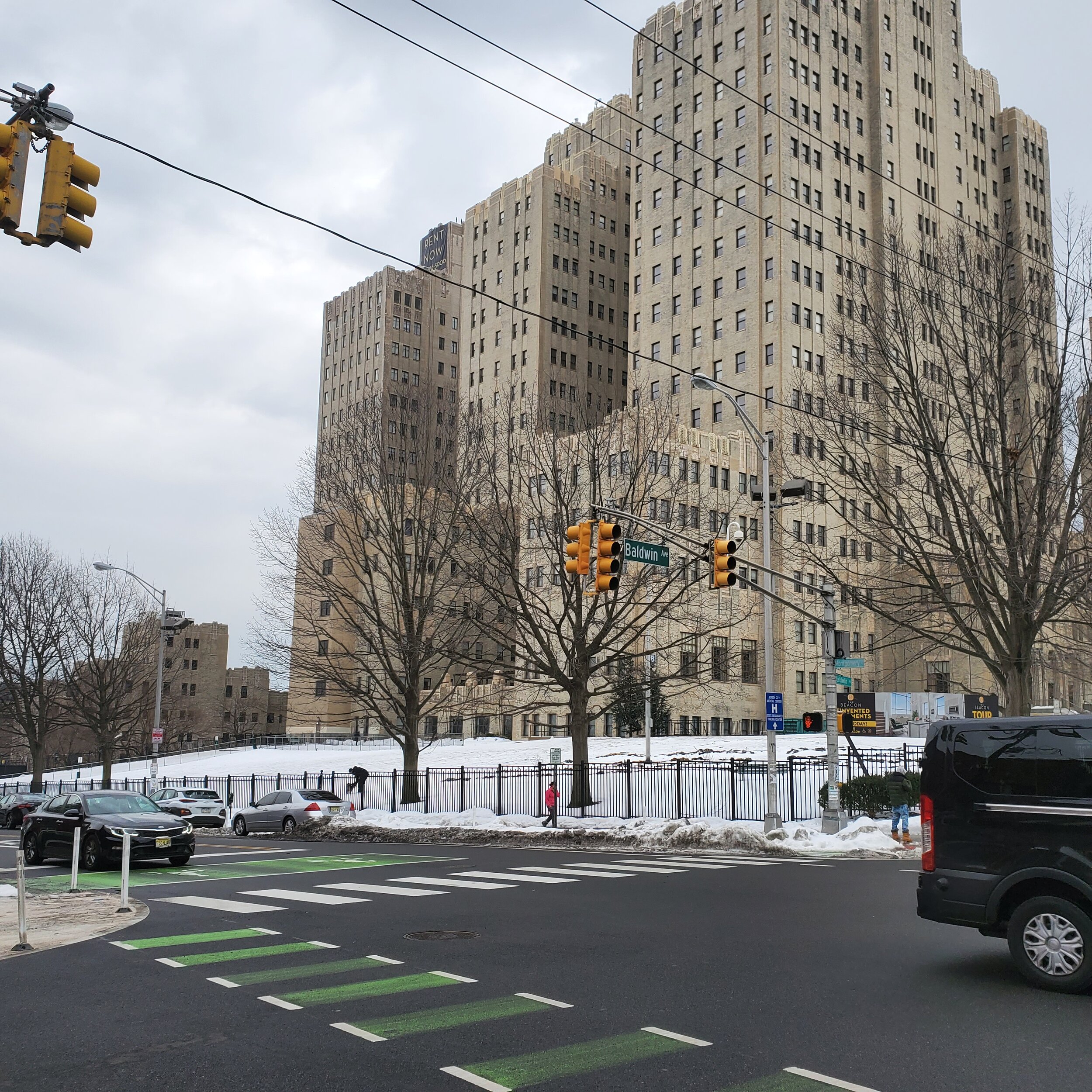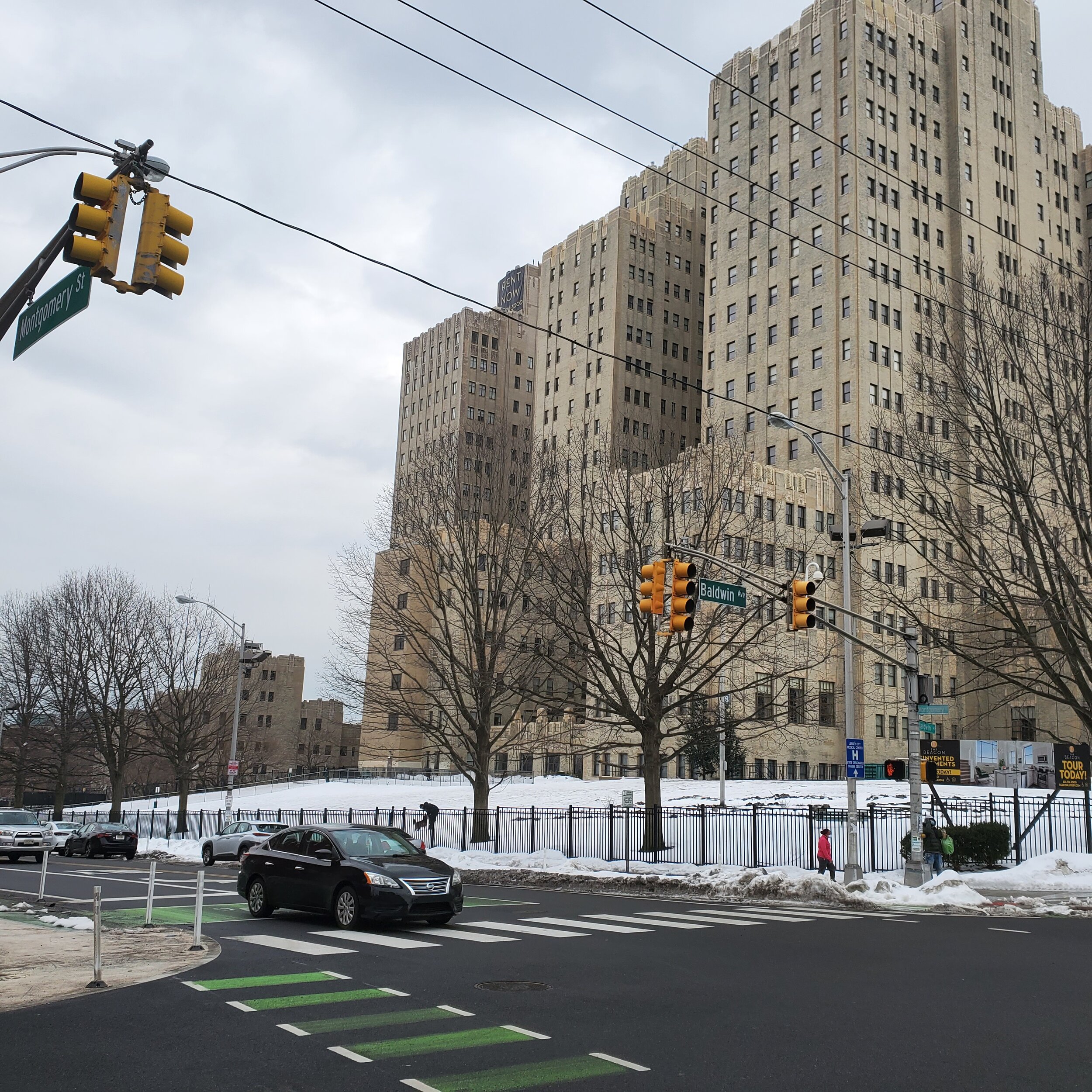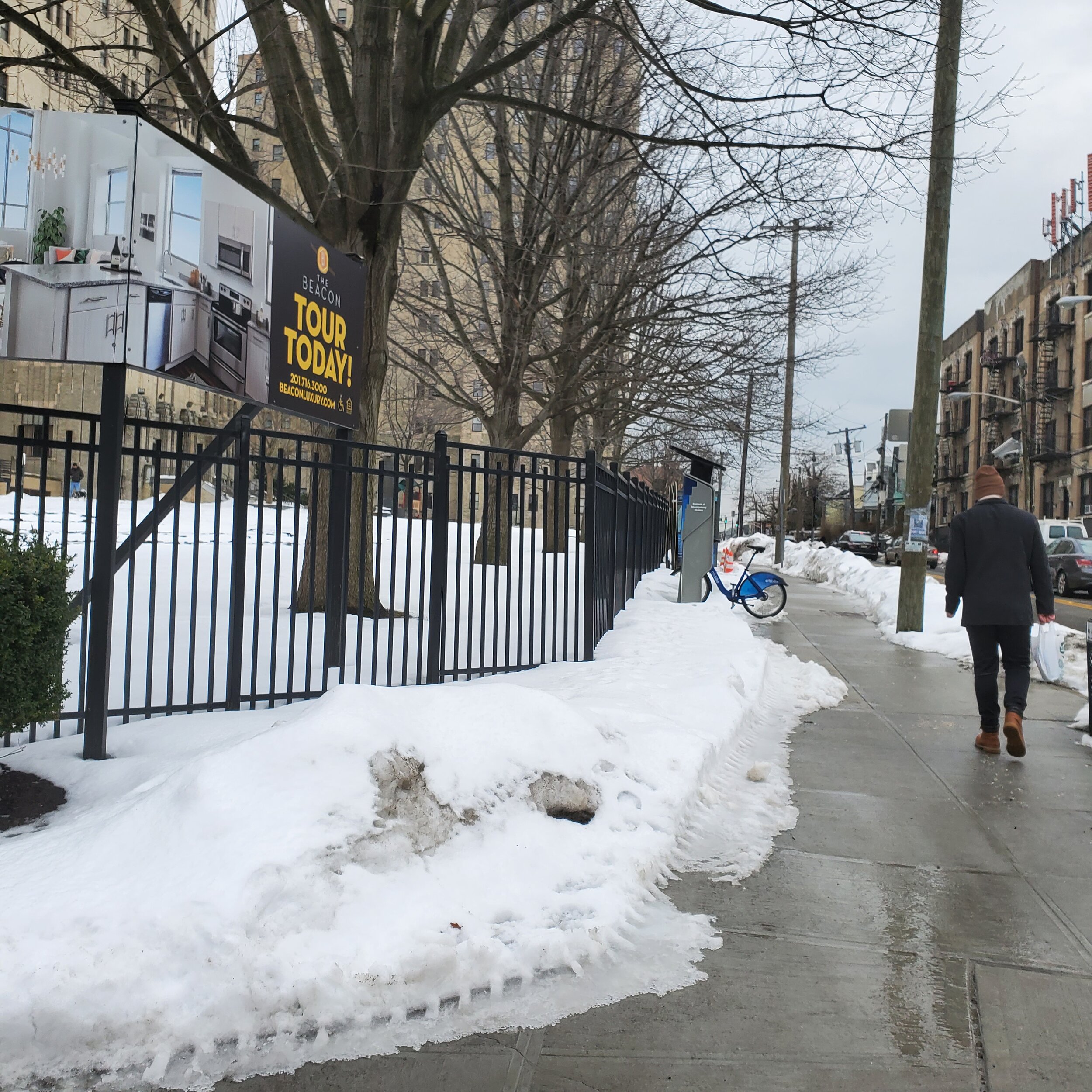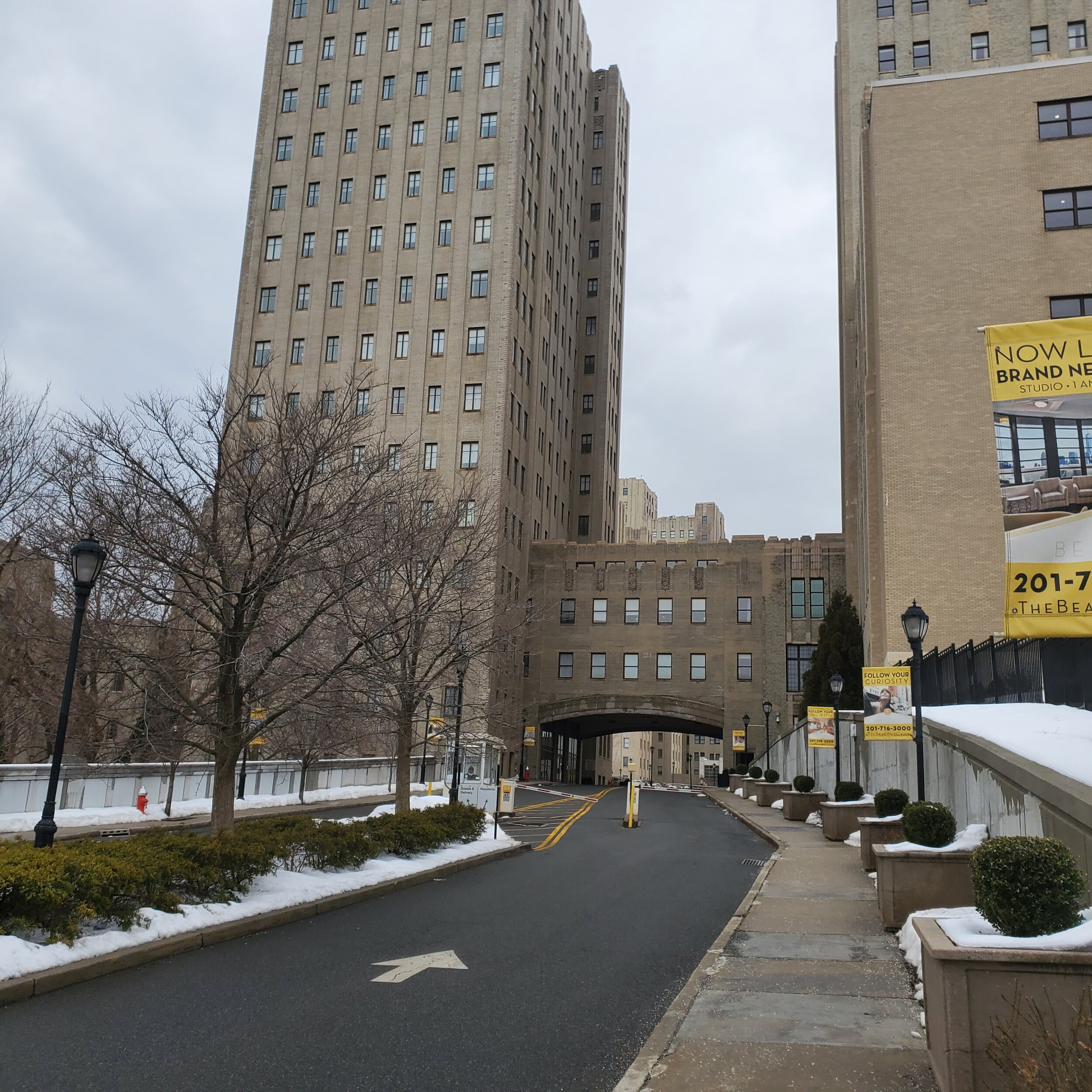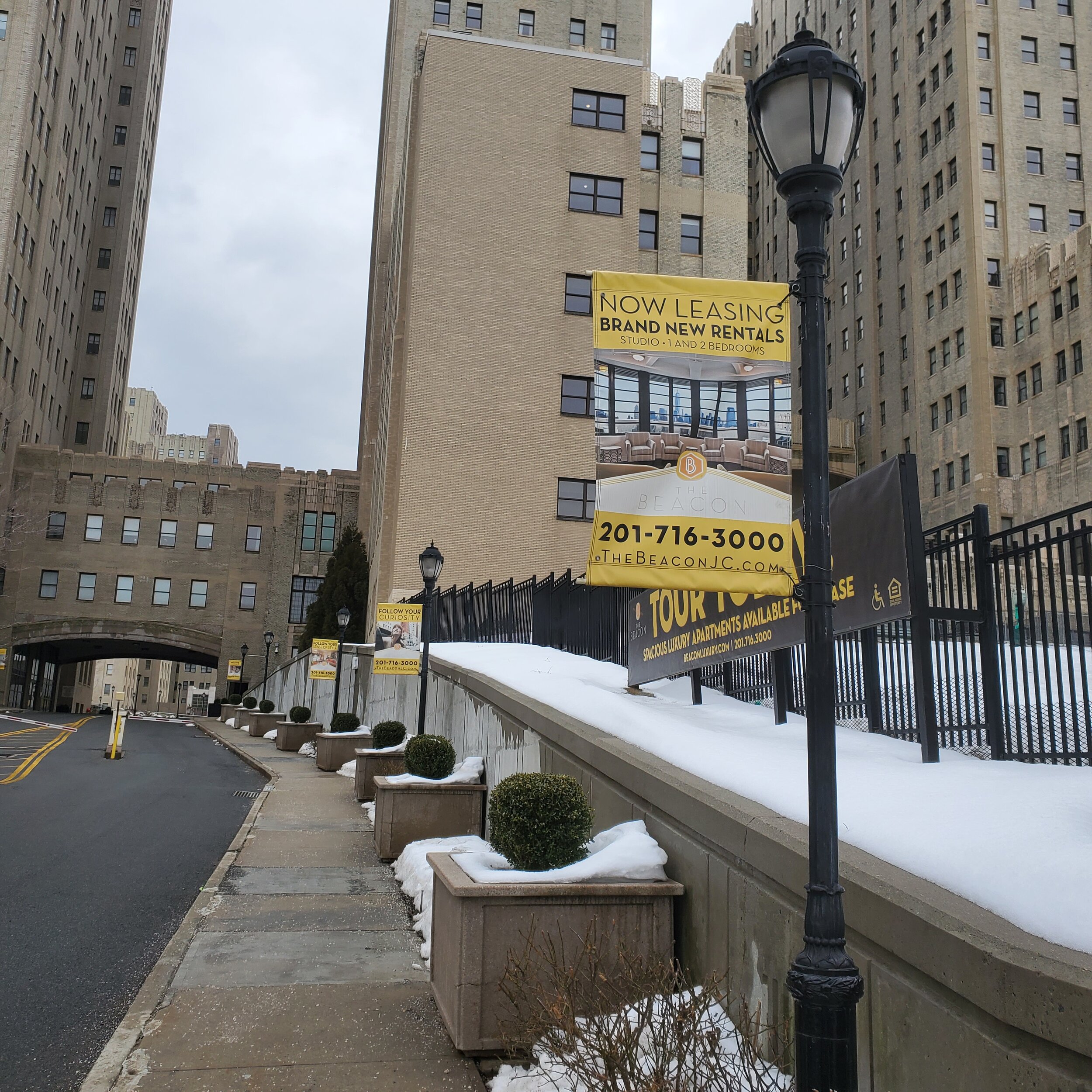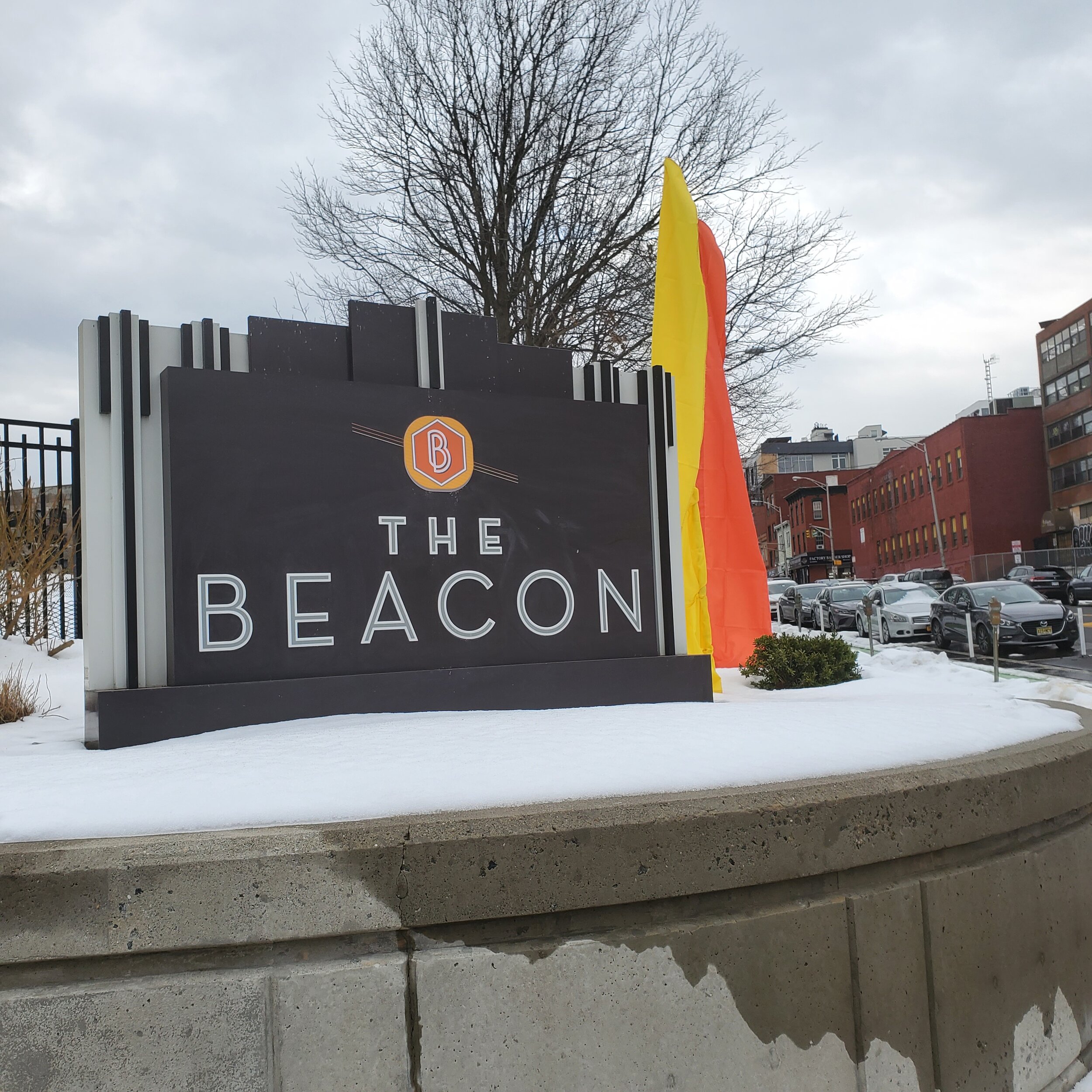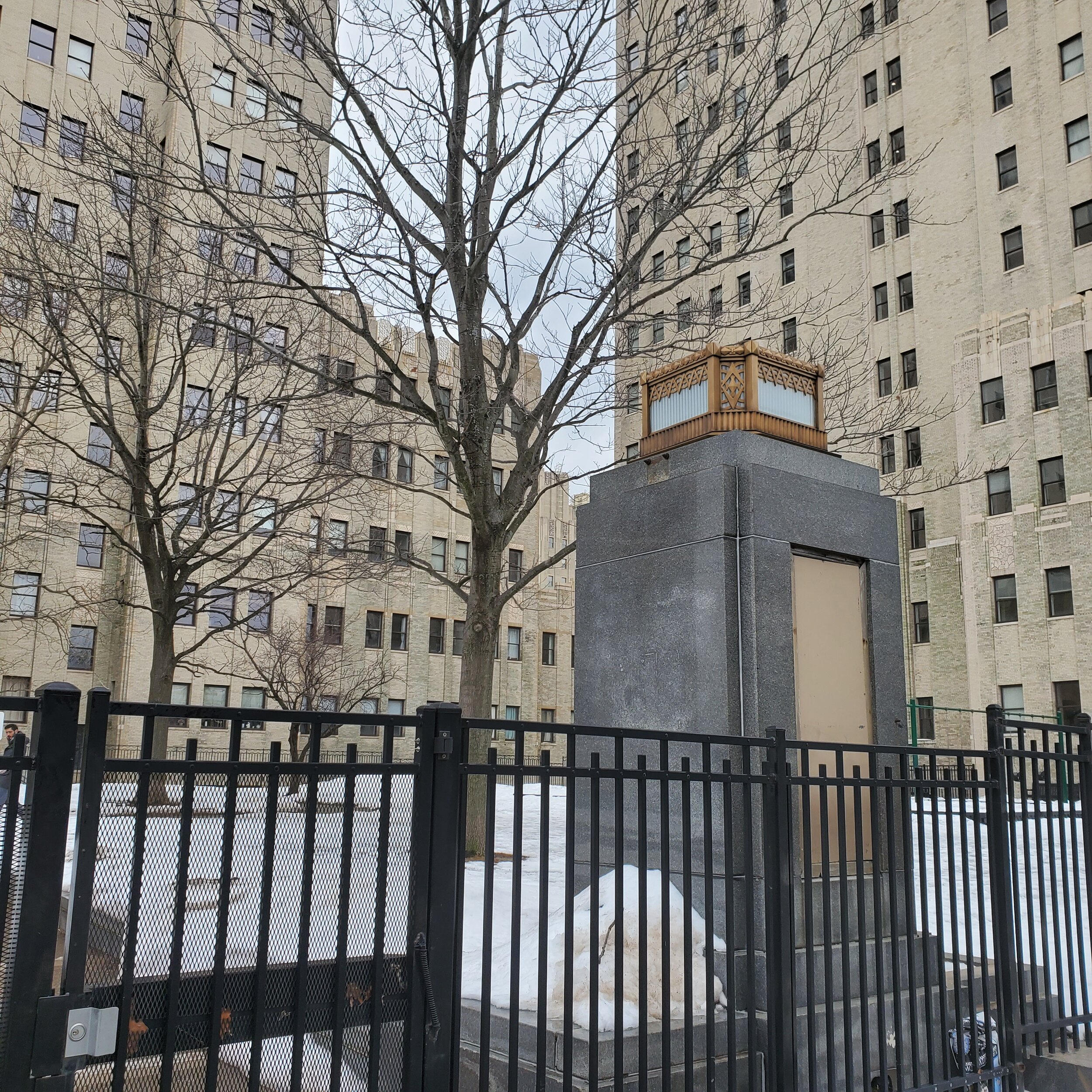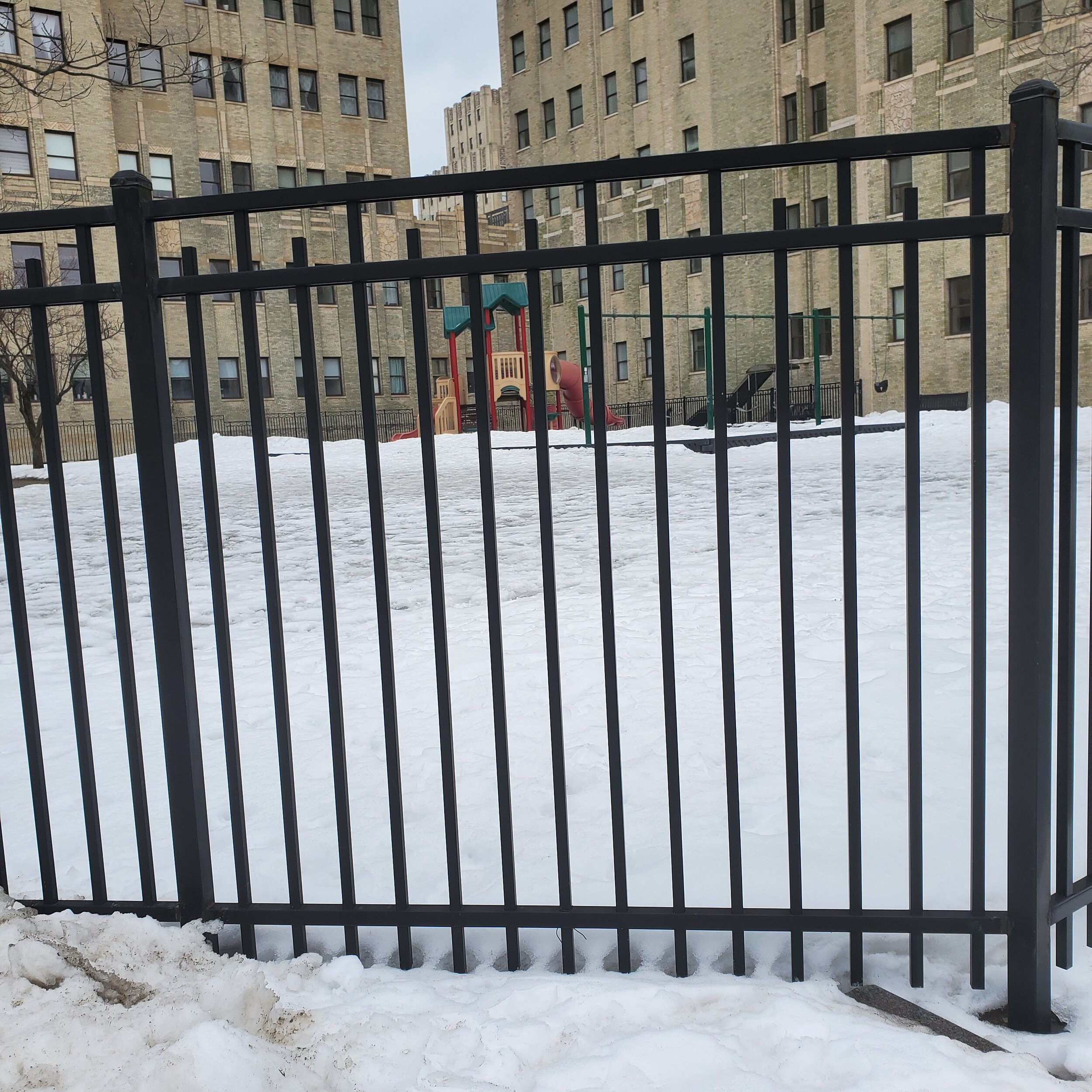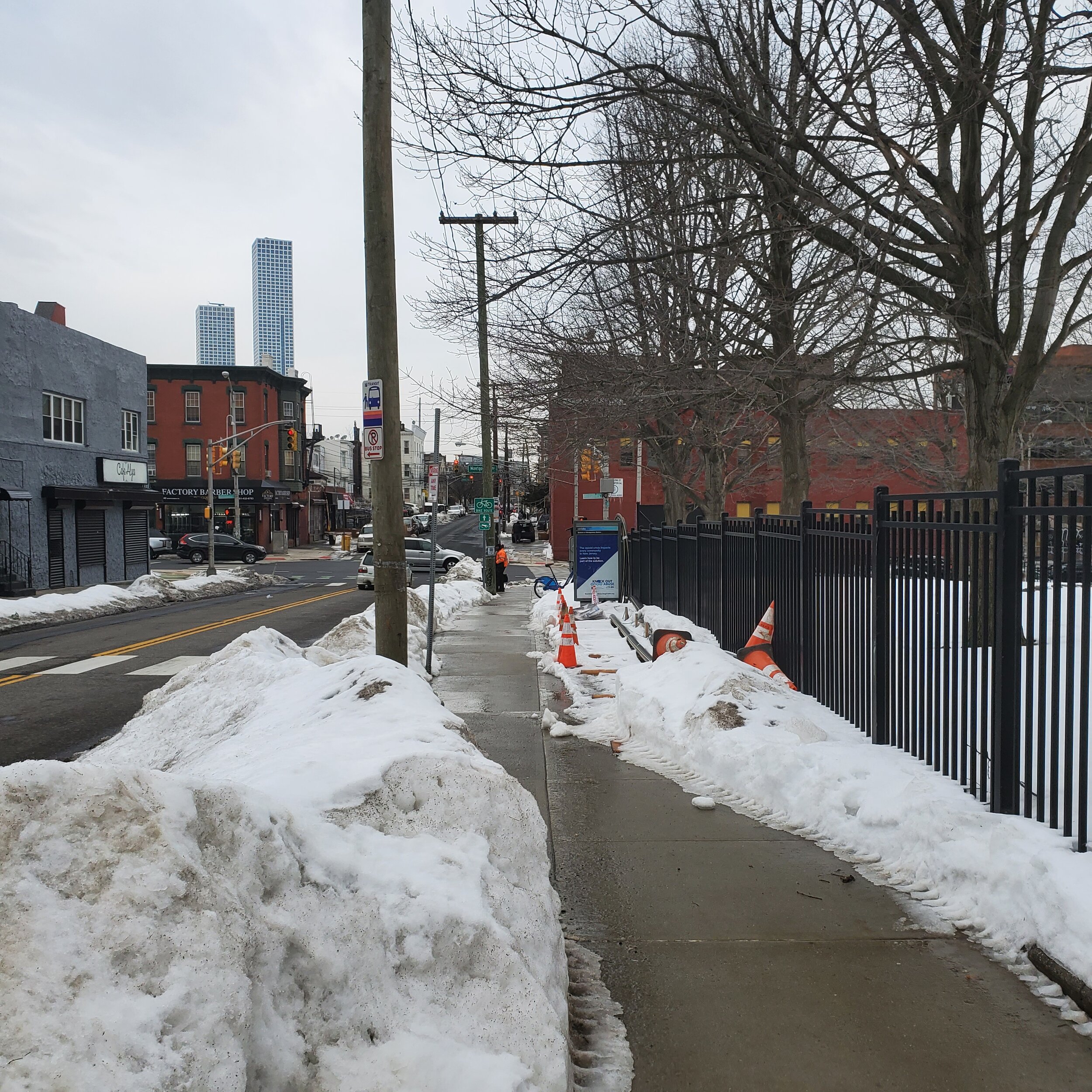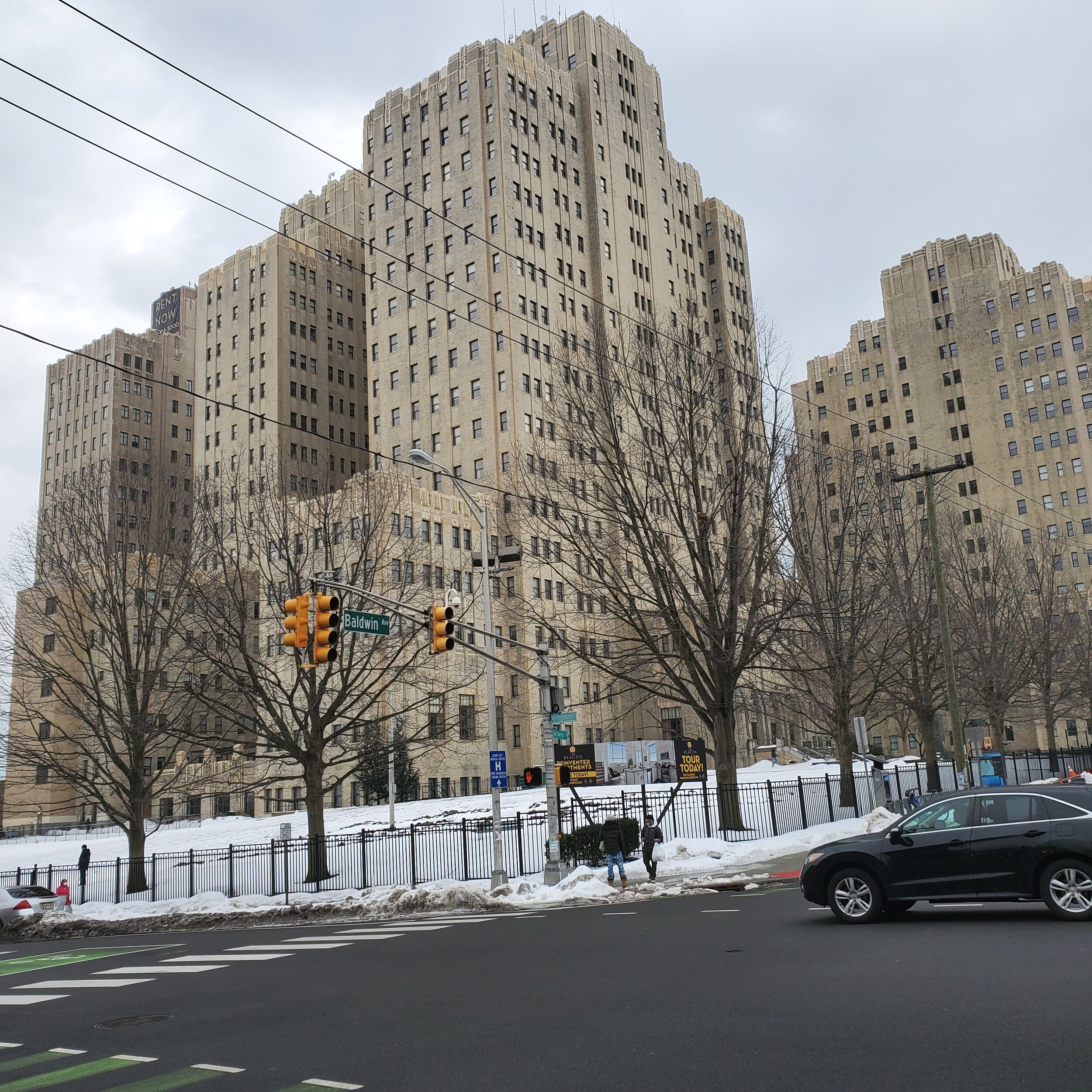
sustainability & habitation
Space is very important to us. It encompasses our personal possessions and our psychological state of mind. Most of the world's human population inhabit some sort of urbanized area and this number continues to grow. More sustainable solutions regarding housing, local food system planning and resiliency are on its way.
Not all ‘Gated’ Communities Have Gates
The term gated communities largely refers to communities or planned developments, secluded from the rest of the urban form, but in this article, the term gated communities will also encompass what I define as large luxury infill developments with private amenities, inaccessible to the majority of its neighborhood’s residents due to financial/income barriers and psychological symbolism that is meant to keep low income and most people of color excluded.
Front & York Luxury Development, DUMBO Brooklyn, NY with Private Amenities such as Swimming Pools, Gyms, and Terrace Parks.
Not all ‘Gated’ Communities Have Gates
Luxury mixed-use and residential developments are usually built with a variety of private amenities solely accessible to those who can afford the luxury cost of living. Today, we see new luxury residential and mixed use developments largely funded and built through real estate investment funds and equity firms in newly rezoned neighborhoods. Luxury apartment developers lure prospective tenants by flaunting opulent amenities. About every luxury apartment building website has a page featuring the apartment complex’s amenities. And for those who can afford it, the availability of certain privatized amenities such as gyms, pools, and parks can be a deal breaker in regions such as the New York, New Jersey metropolitan area, where space is at a premium.
The term gated communities largely refers to communities or planned developments, secluded from the rest of the urban form, but in this article, the term gated communities will also encompass what I define as large luxury infill developments with private amenities, inaccessible to the majority of its neighborhood’s residents due to financial/income barriers and psychological symbolism that is meant to keep low income and most people of color excluded. In addition, what may be deemed an amenity for the wealthy, can be essentials for people with lower incomes.
Historically, American housing policy and practice has shown that de facto racial segregation has found ways to separate where people live, by race, using pseudo mathematical equations meant to protect the commodification of housing. Is today’s separation of privatized amenities society’s way of segregating white and wealthy from poor people of color? Is it a modern method to advance segregation practices hidden through neo-liberalism?
The information in this article is no way meant to disparage residents of luxury developments as it is understandable that some people would like to pay a premium for privacy and good quality. However, this piece shall serve as a concession to acknowledge luxury amenities to tenant relationships and their overall impacts to society. So let’s explore the social, psychological and physical impacts these new developments may have on people in their surrounding communities. Diverse solutions, in which some are offered in the recommendations section, should help localities provide more housing options for different income-earners and provide greater public-private partnerships for community-based services.
“Not all gated communities have physical gates, some have monetary barriers, racist symbolism, and exclusionary psychological barriers that warrant low income and some people of color are not welcomed.”
Today's Residential Amenities were Yesterday's Neighborhood Essentials.
A few of today's private amenities were once public necessities or essentials by early urban planners and real estate developers. There are many examples that show early 20th century developers’ use to provide amenities inclusively for the community’s consumption.
Clarence Perry and the Neighborhood Unit
In the 1920s, Clarence Perry, developed the concept of the neighborhood unit, which was referred to as the ‘5-minute walk’. This concept included designated space for public community centers,and shared recreation and park spaces. Some of these concepts were built by Clarence Stein in Sunnyside, NY (Queens) and Rayburn, NJ.
The Neighborhood Unit
by Clarence Perry
Public Swimming Pools - New York City
The infamous Robert Moses built community parks and pools, in fact, in 1936, the Works Progress Administration (WPA) opened 11 pools in underserved communities. Each unveiling featured parades, water carnivals, blessings of the waters, swimming races, diving competitions, appearances by Olympic stars, and performances by swimming clowns. Every one of the pool complexes really was something to celebrate. They were so impressive, the Landmarks Preservation Commission places all 11 pools “among the most remarkable facilities ever constructed in the country.” Designed to accommodate 49,000 people across the city, each pool was larger than several Olympic-sized pools combined, and all were technologically extraordinary.
The massive pools featured under-water lighting, floodlighting, and a host of promenade lighting for night swimming. They each had heating systems, and innovations that set new standards in pool construction, such as “scum gutters'' that allowed sunlight to naturally kill bacteria, and foot baths that kept all swimmers in squeaky-clean repair
The pools were not officially segregated, but Robert Caro alleges in his biography of Moses that the Commissioner tried to discourage black New Yorkers from using pools in white neighborhoods by manipulating the temperature of the water.
Case Study: Jersey City’s “The Beacon”
Jersey City’s “The Beacon” is a vivid example of a literal gated community, with privatized amenities. Formerly, Jersey City Hospital, Jersey City Medical Center, the Beacon was redeveloped into a luxury apartment complex with various mixes of use, and opened for new tenants in 2016. Instead of integrating the existing street grid with the surrounding community of McGinley Square and Bergen Hill, the complex is cut off from public pedestrians, micromobile uses, transit, and vehicles by a fence that surrounds the entire 14 acre site, as shown below. Vehicular access is limited by a security guard and gate. The complex is hailed as the largest residential restoration project in the United States, in which 10 Art Deco buildings are federally landmarked. The developers pride itself as an “amenity rich apartment community… resort living… with [an] endless amount of modern conveniences and luxuries”. Some of these private amenities includes:
“gated community”, (yes this was actually listed as an amenity”;
onsite deli/ convenience store
Daily food trucks,
Dry cleaning pickup/drop off
Frequent resident events and activities,
Complimentary shuttle service [to/fromGrove Street PATH station, in downtown JC]
Indoor Swimming Pool
Residential Lounges and Studies.Club Rooms/Theaters
Business Centers/Conference Rooms
To enjoy these amenities, you have to be a resident, but the only caveat is you’d need a minimum of $1,480 for a 444 square feet studio, in which, for a census tract that is considered moderate to high risk for social vulnerability, most people cannot afford. The residents of the Beacon can literally live in their development and never interact with a person who was born and raised in the surrounding community. And on the other hand, a resident born and raised in the McGinley Sq and Bergen Hill neighborhoods, may never afford to be able to access the essentials and amenities exclusive to the Beacon residents, even if they wanted to pay for it separately from living there.
In addition, community residents surrounding the Beacon would have to travel a long distance to access public parks, public transportation, and a public pool. However, these essentials are gated, and only available to residents of the Beacon.
Other areas throughout the NYC region, including Williamsburg, are seeing luxury development with 'cruise-like' amenities as a culture killer, where artists and bohemians cannot afford or find the 'cool and artsy' places that once existed. Here are some other examples of luxury private developments with private amenities:
Front & York - Brooklyn NY
Solaris Lofts - Jersey City, NJ
The Ashland - Brooklyn, NY
Center Blvd at Hunter’s Point South - Long Island City, NY
Bergen Hill, Jersey City Demographics
Approximately 52.2 percent of Census Tract 31, Hudson County, New Jersey residents in 2015-2019 were foreign-born. In 2015-2019, 23.6 percent of people were in poverty. An estimated 23.7 percent of children under 18 were below the poverty level, compared with 38.8 percent of people 65 years old and over. An estimated 22.0 percent of people 18 to 64 years were below the poverty level.
Below are a set of maps showing CDC’S social vulnerability index from years 2000 to 2016 for census tract 31, in which The Beacon is located. The data may be skewed as people with higher income has moved into the Beacon, private resources masked as amenities are not available to the greater community.
Scroll left or right to view Bergen Hill’s Demographic and Household Information for years 2010-2014.
The gallery afterwards shows the same characteristics but for the years 2015-2019. You will be able to compare each neighborhood demographic or characteristic to see how they have changed over the years.
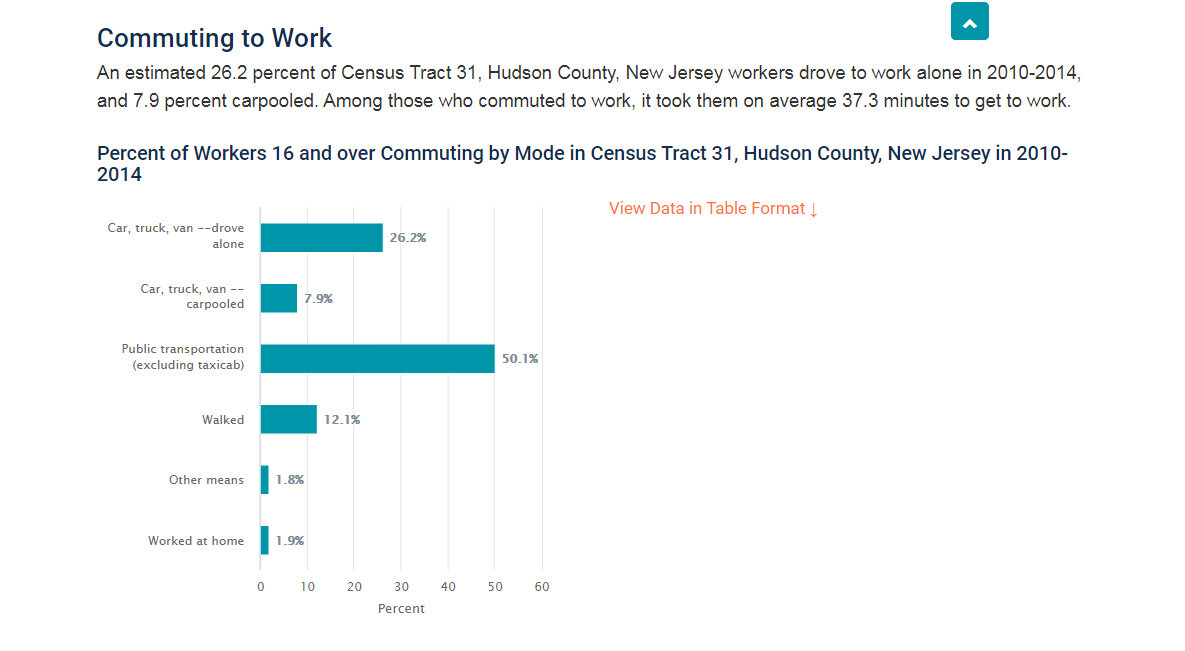
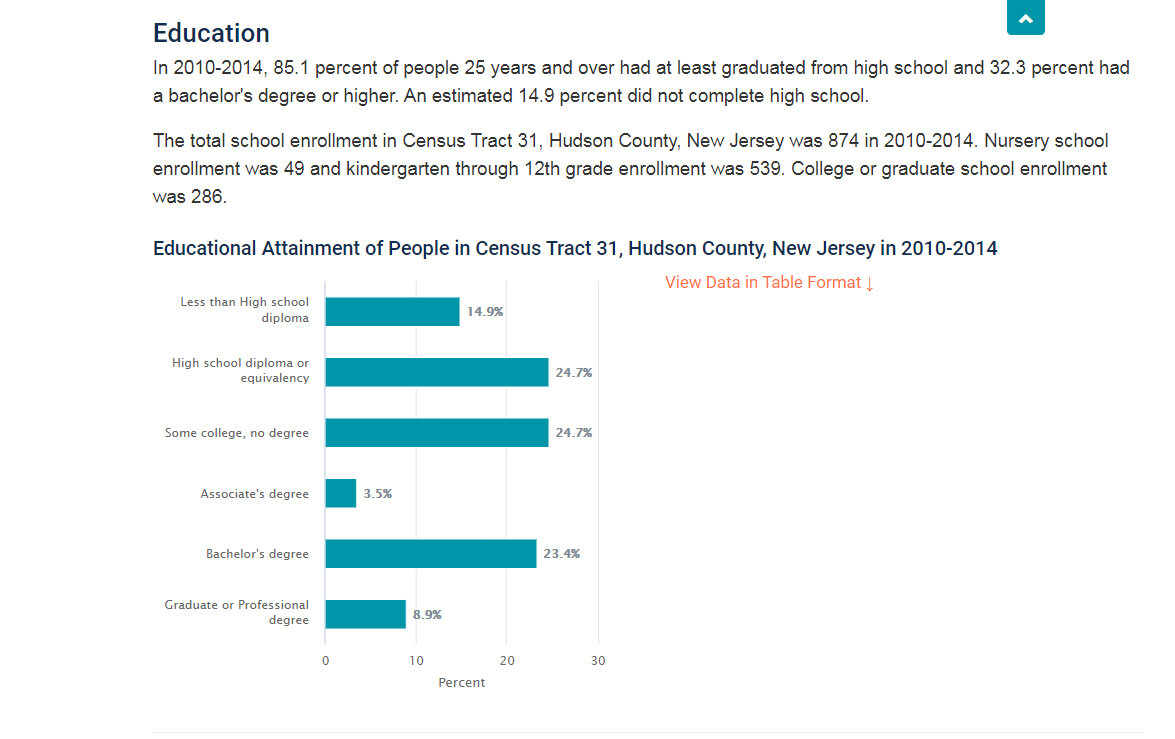
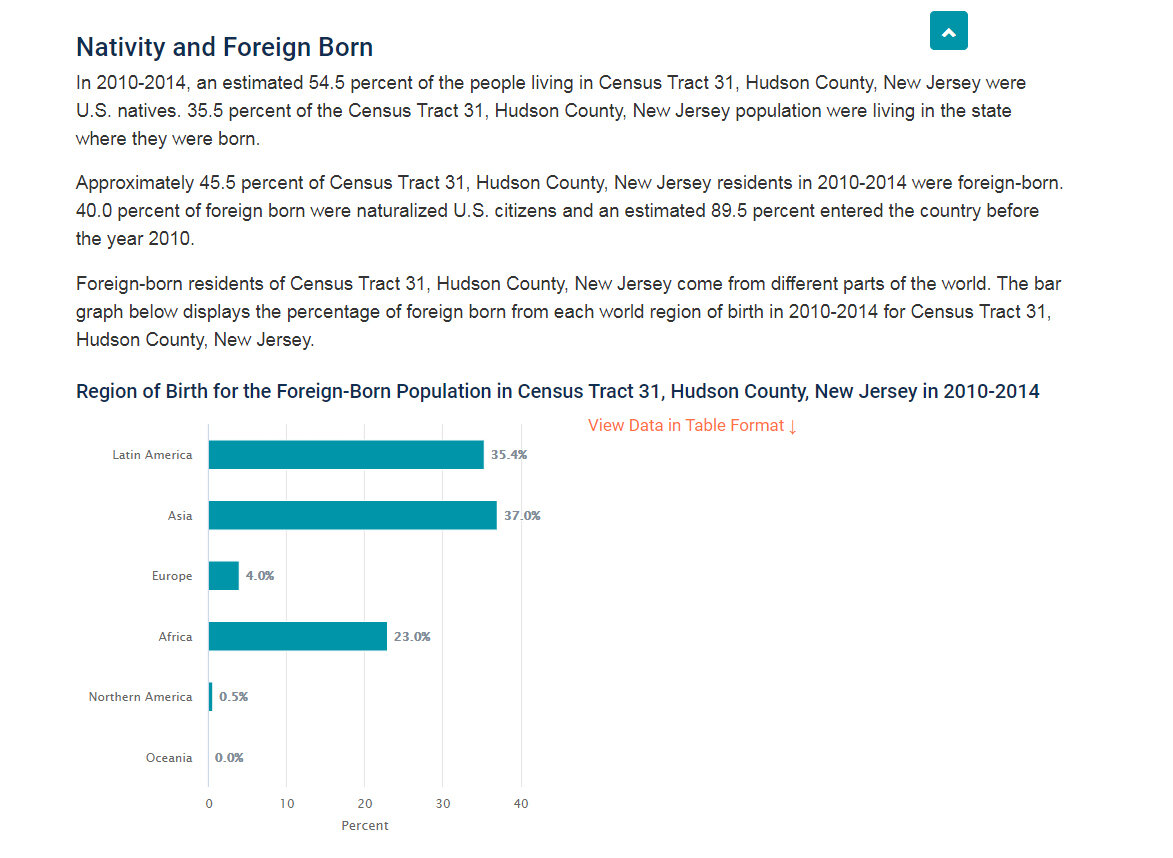
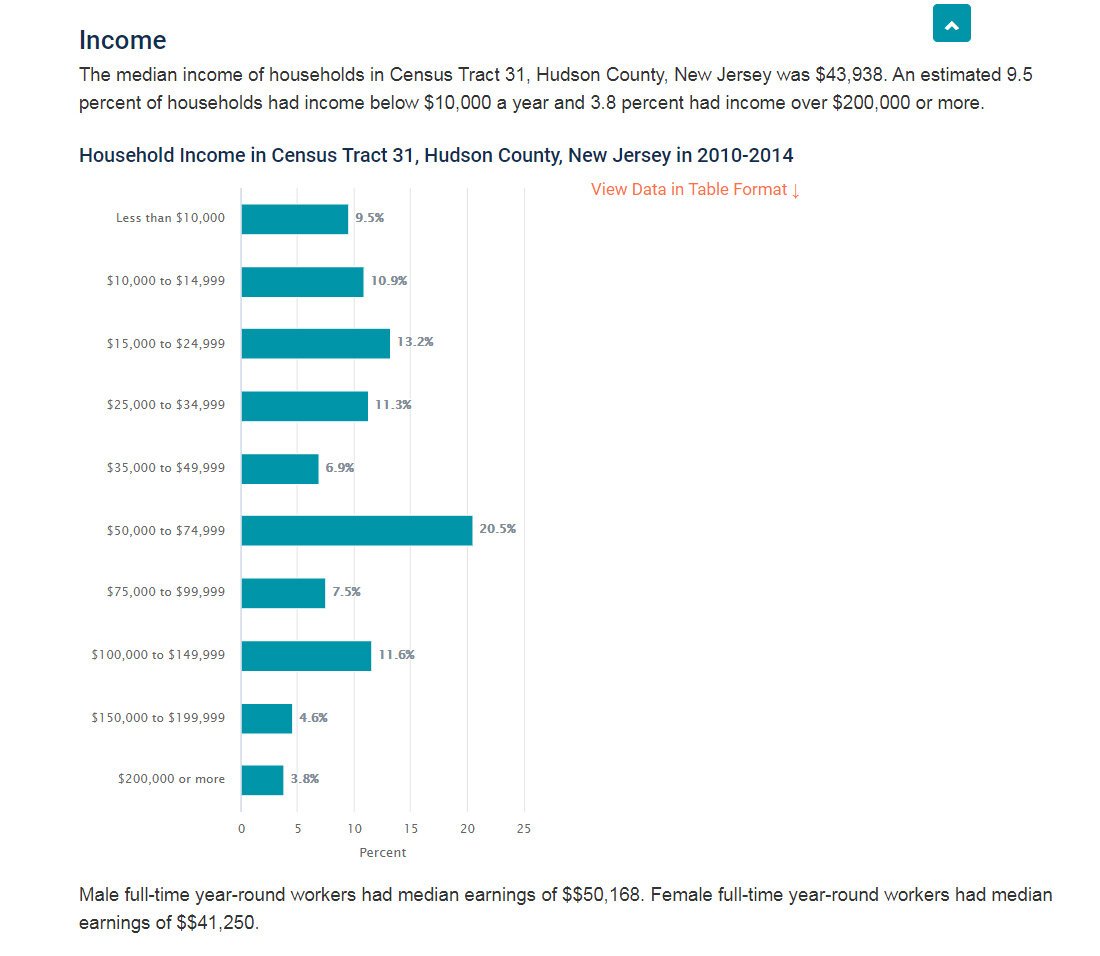
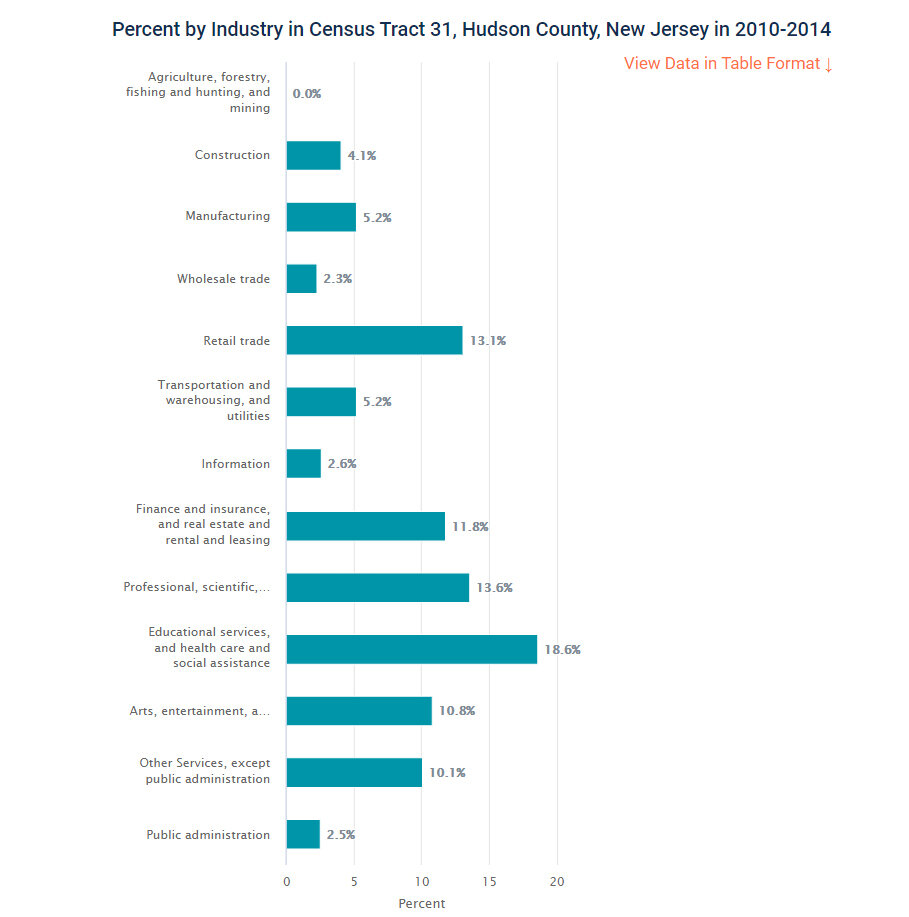
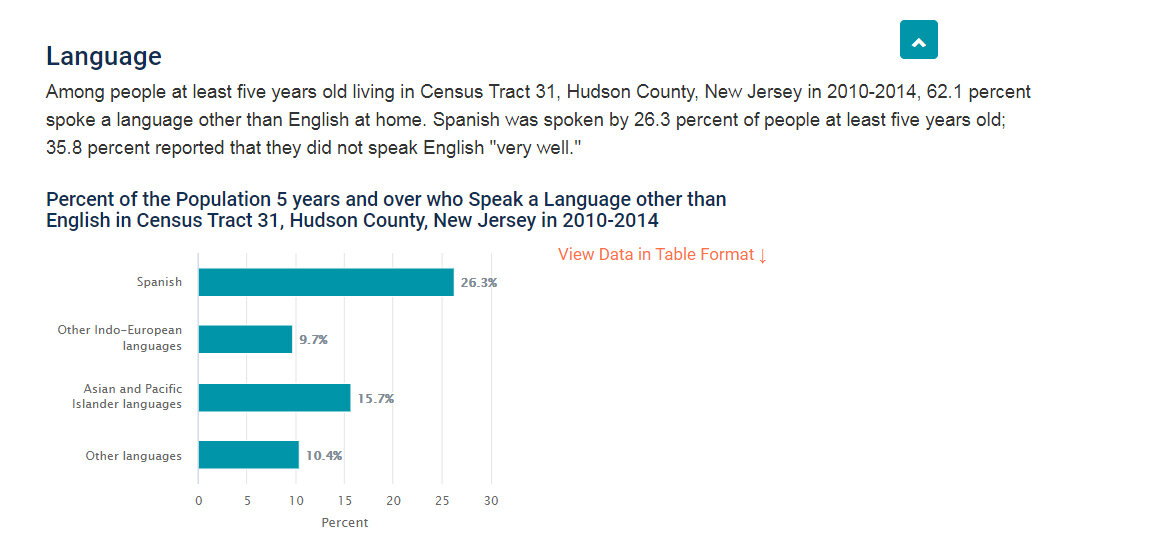
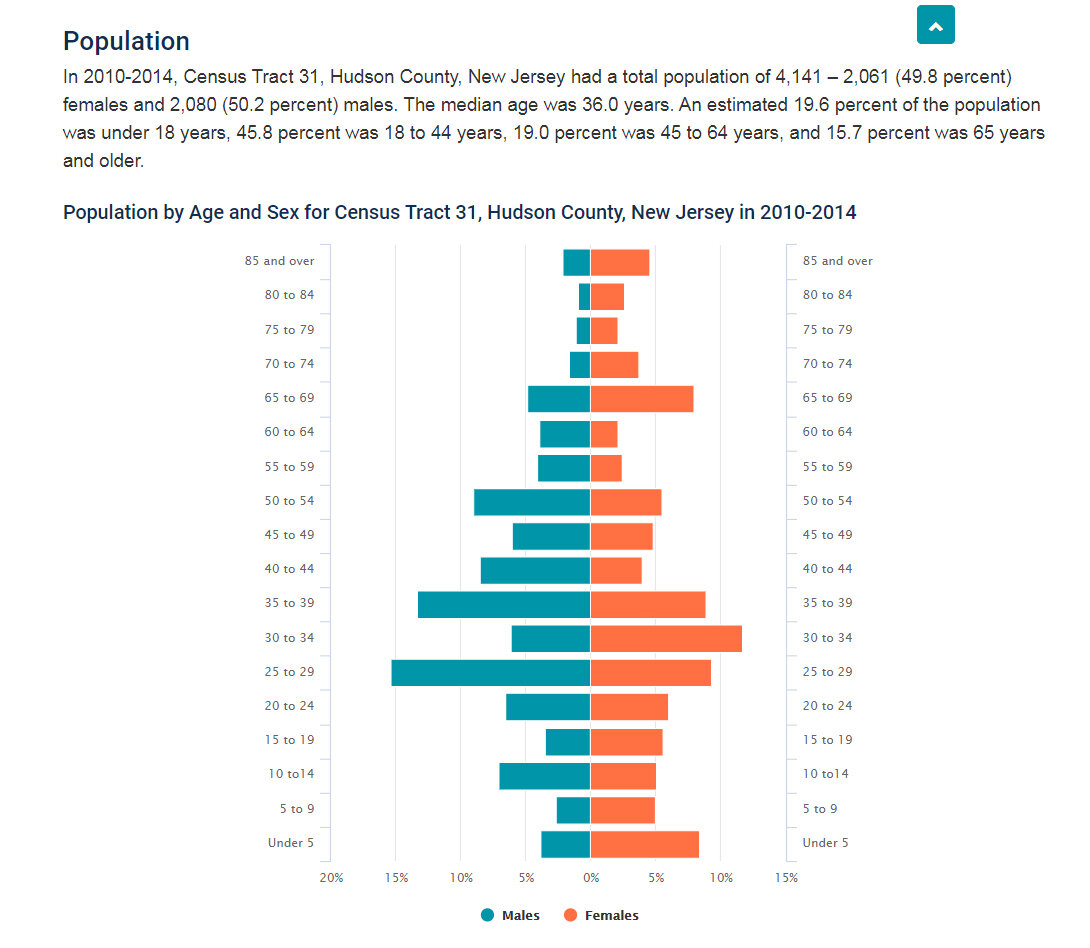
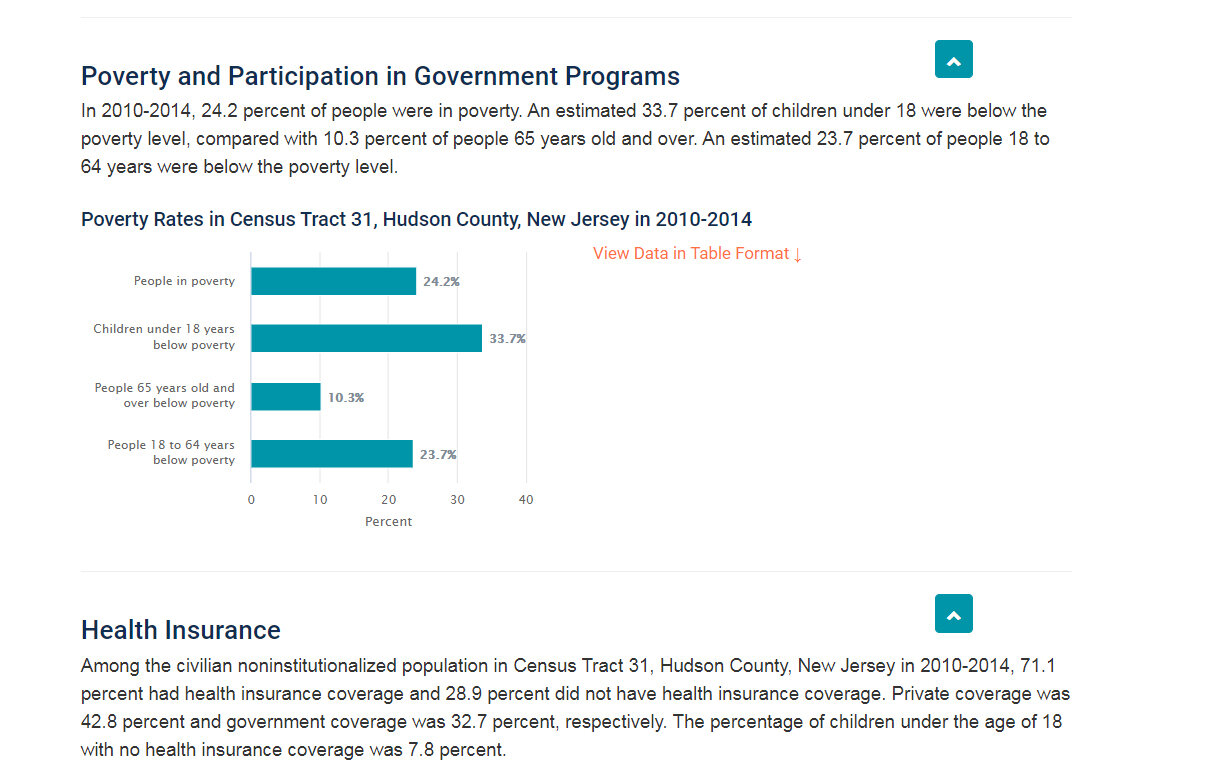
Scroll left or right to view Bergen Hill’s Demographic and Household Information for years 2015-2019
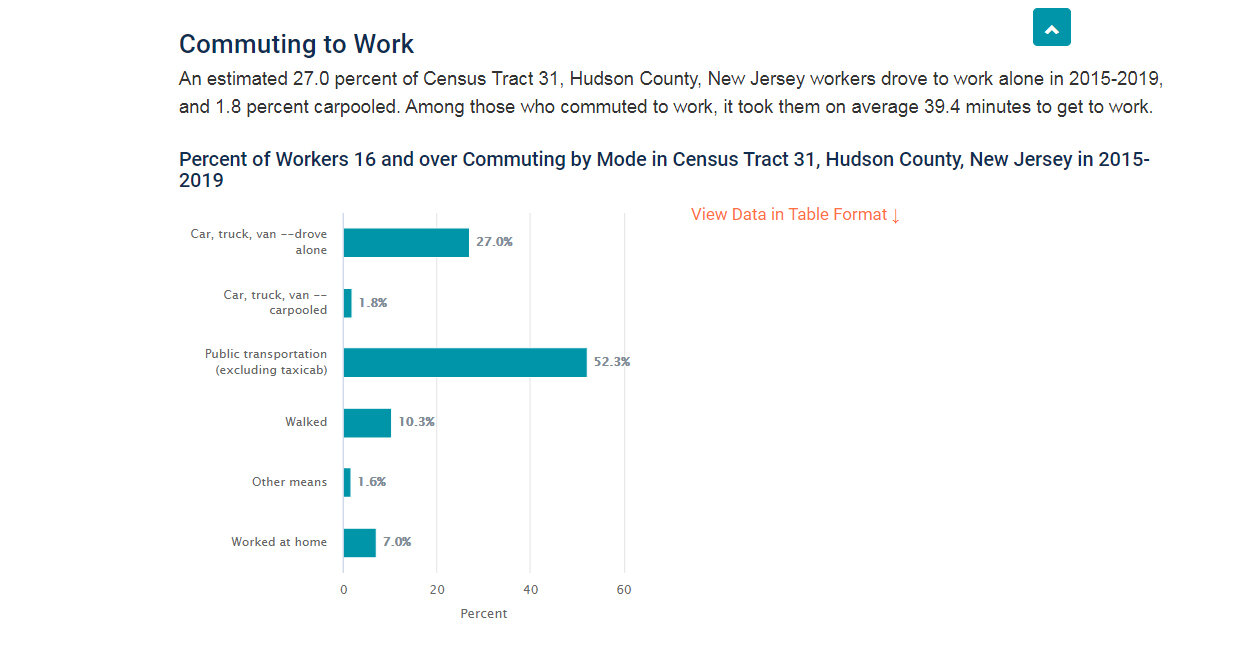

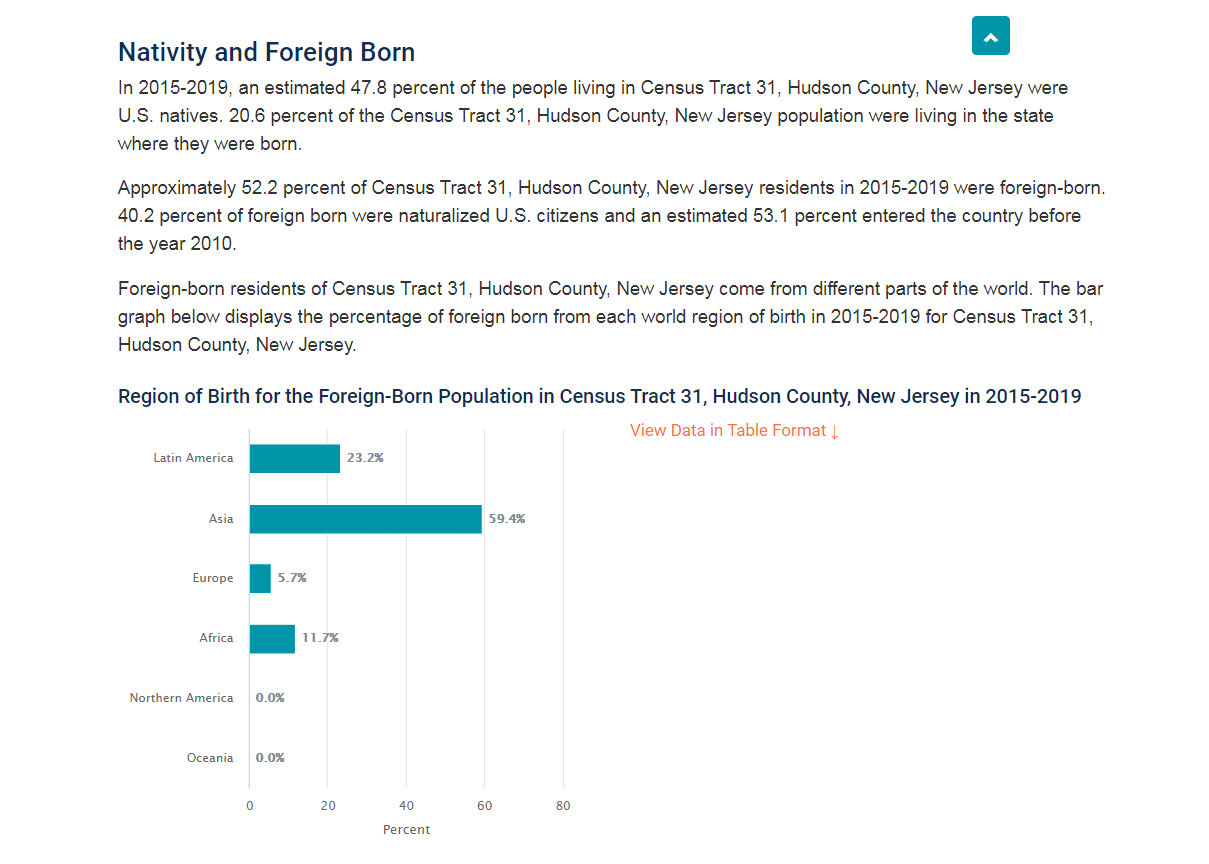
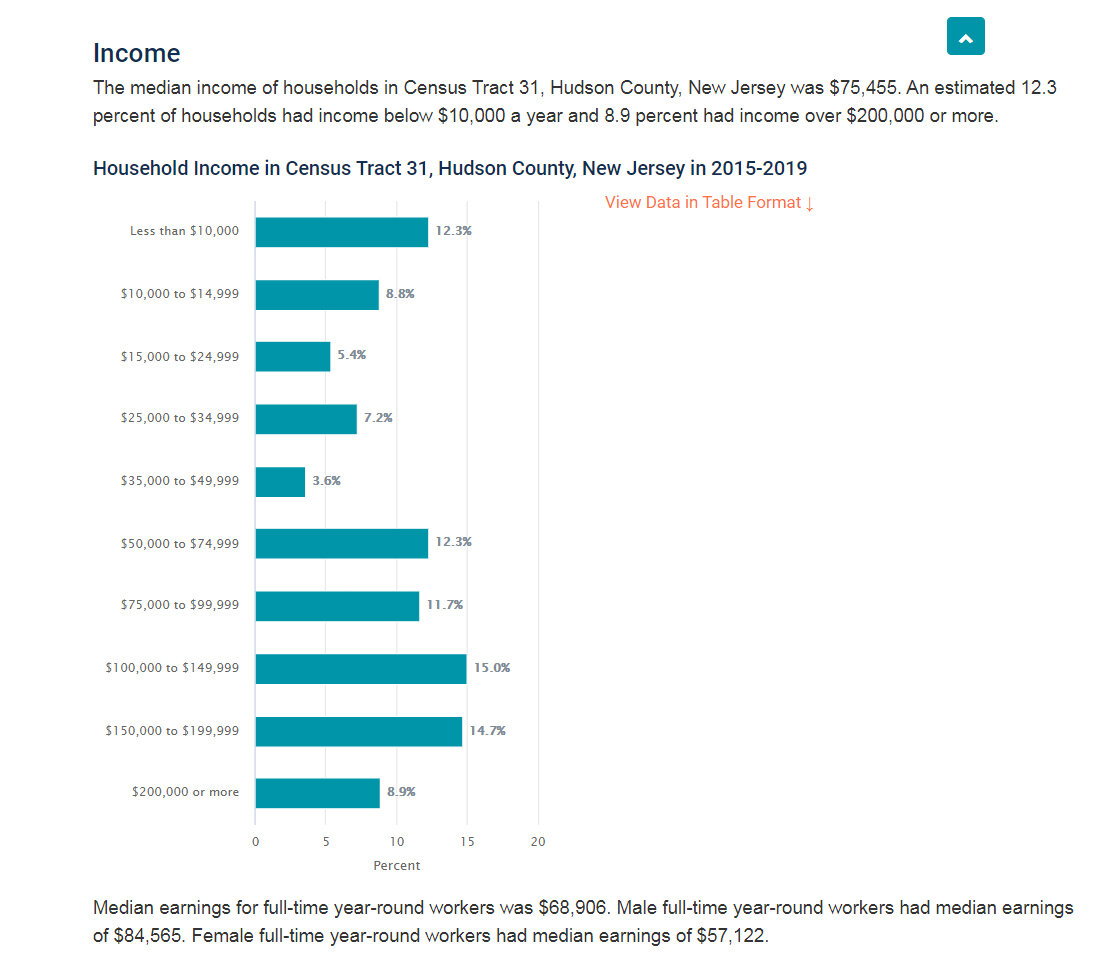
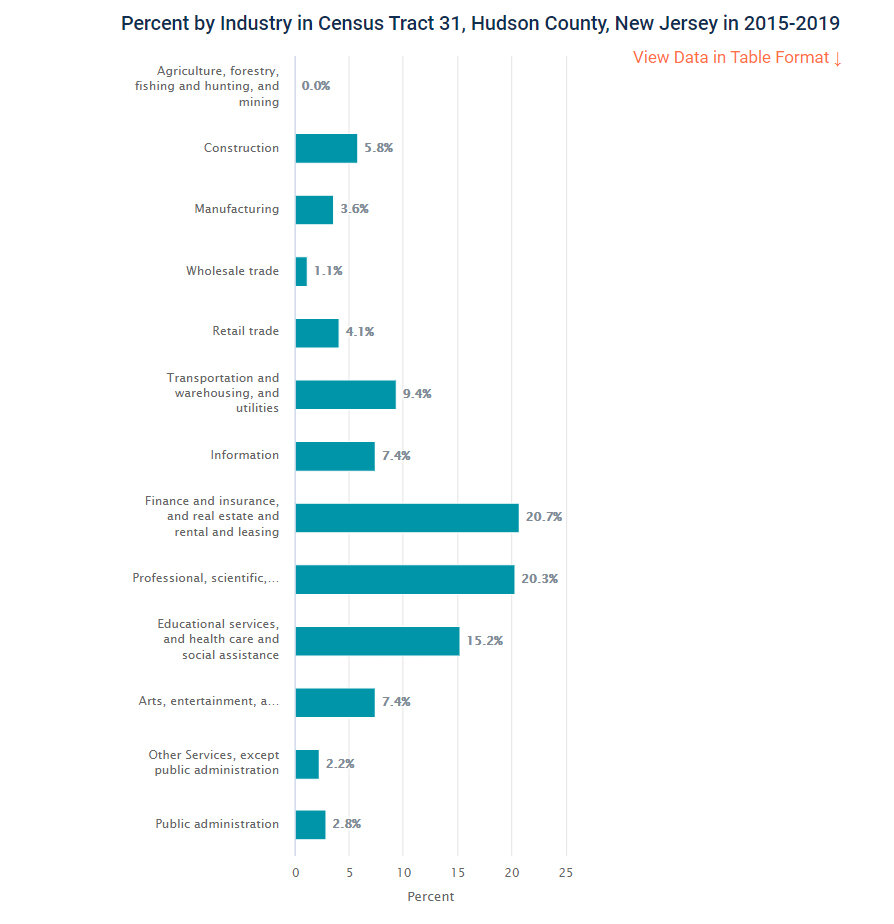
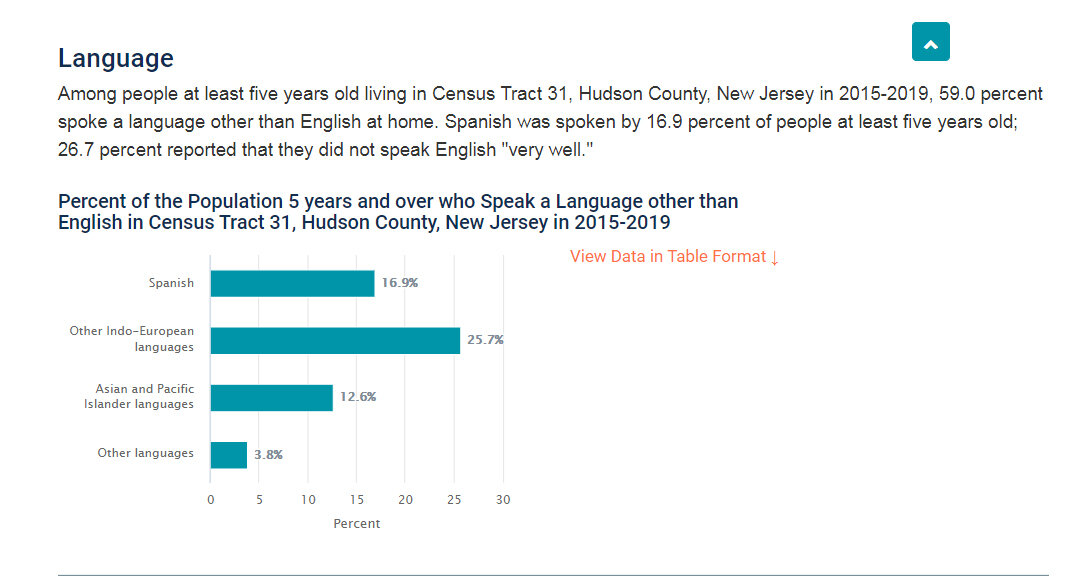
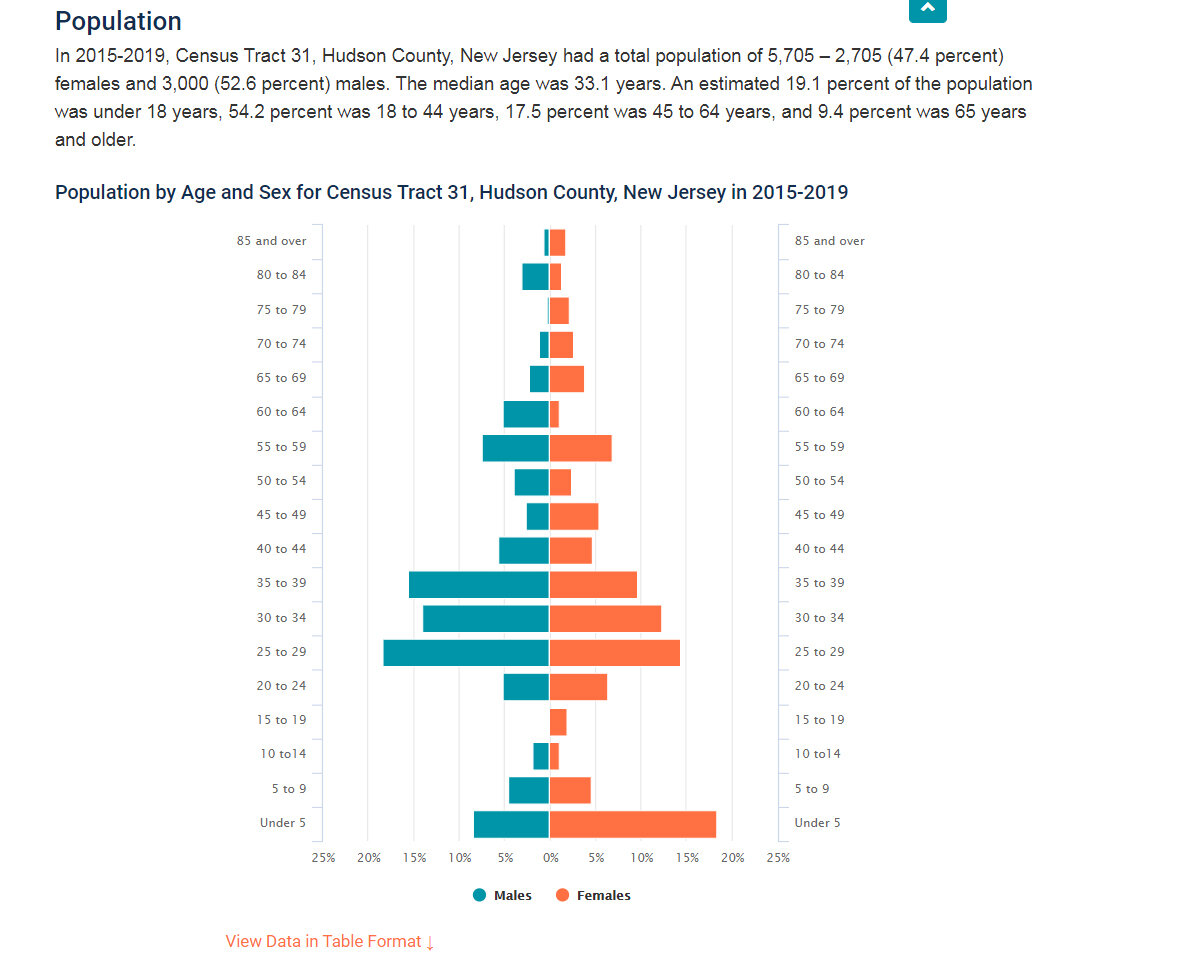
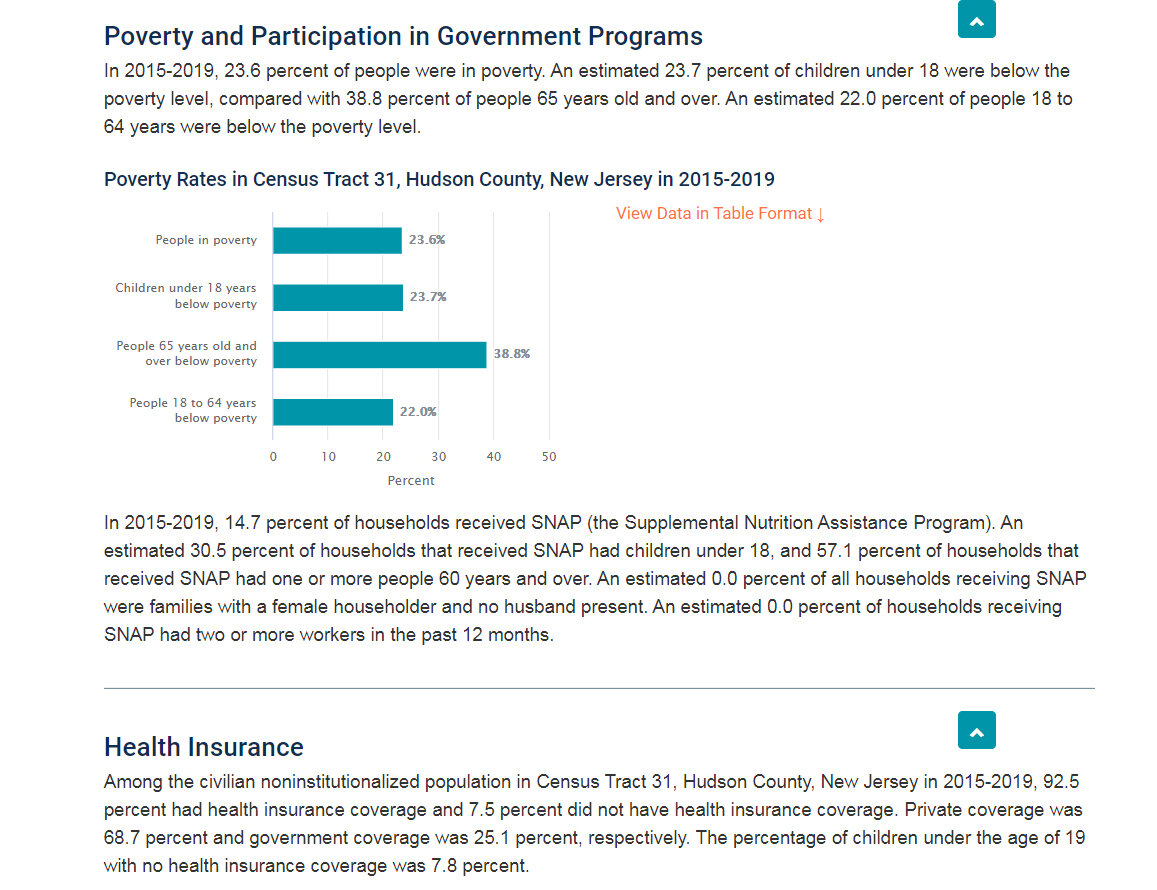
The Environmental Psychology Behind ‘Gated Communities’
Below are excerpts from Gated Communities, Social Sustainability in Contemporary and Historic Gated Developments edited by Samer Bagaeen and Ola Uduku elaborating on the social, cultural and psychological impacts of gated communities throughout our society.
“Literature is available on whether gated community's play more into residents' idea for social status, as a members only club for fortified enclaves versus the discourse of fear, perceived as a bastion to keep the barbarians from the gate.”
“Residents in gated communities, especially in the U.S, are often bound by legal conditions that control lifestyle and social conditions within the community. These communities provide an example of how much a wider rise in contractual governance resulting from the new relation between the state, market and civil society designed to address concerns about social order.”
“The process of the accumulation of wealth, and structural advantage, economic and social, inherent in the gated community, mirrors the historic process by which the developed nations acquired their dominance and affluence. Colonization was a process of segregation and separation by which the rest of the world was reconstructed to provide the natural resources and captive markets for the metropolitan centre's and their elite. Gated communities are the neo-imperalist colonization of society: they are elite empires within a city that maintain the relationship of colonizers and the colonized, albeit in an urban setting. In this neo-colonial process. It is both the city as a central place and society as an inclusive unit that is being de/reconstructed.”
“Gated communities are a shining example of how not to provide security to a community, but to enhance and spread total insecurity by generating dysfunctional relationships. Societies marked by increasing equity has less to fear from internal social tensions. True physical and social security is provided by empowering the poor and the marginalized and opening the gates of gated communities. Valuing society and equitable social provisions can liberate the private space for families.”
Not all gated communities have physical gates. Some have monetary barriers, racist symbolism, and exclusionary psychological barriers that warrant low income and some people of color are not welcomed. The privatization of luxury housing amenities in low Income neighborhoods is the neo-colonial form of exclusionary racial zoning practices.
Modern luxury mixed use developments with exclusive privatized amenities located in low income black and brown communities is a form of de facto or “ society says its okay” form of racial segregation. Based on observation, the demographics of luxury apartment buildings in gentrified areas are almost the same: predominately white and affluent tenants surrounded by lower income people of color. There then appears to be a point of saturation where a certain amount of low-income and people of color populations are displaced, luring more developers to induce the effects of gentrification, in what I call an investor’s ‘Goldie Locks Neighborhood’.
“Investor’s ‘Goldie Locks Neighborhoods’ tend to be newly rezoned communities, in economically depressed, usually ethnic spaces deemed suitable for redevelopment and revitalization, often displacing the current residents.”
Income as a Tricky Exclusionary Practice in American Real Estate History
The Color of Law, by Richard Rothstein explains that the dated Federal Housing Administration (FHA)’s underwriting manual gave higher ratings to mortgage applications if there were no African-Americans living in or nearby the neighborhood, but also lowered the mortgage application risk estimates for individual properties with restrictive deed language. Restrictive deeds were recommended by the FHA because the federal agency thought exclusionary zoning ordinances were good enough to prevent low-income African-Americans from purchasing single family homes but inadequate in preventing middle income African-Americans from overcoming the financial barrier to afford the home. Thus, restrictive covenants explicitly prohibited resale to all African Americans, despite if they met the income criteria.
Income is still used as a financial barrier as an exclusionary tool to mixed-use gated communities, as shown by the Beacon luxury apartment example. By simply publicizing some amenities, the Beacon would offer essential community services to the surrounding community. The cost of luxury housing developments can be as high as 3x the cost of existing rent in a neighborhood, preventing most existing residents financial access to the amenities and in some cases the essentials of what only the wealthy can afford.
Many would argue that the Area Median Income (AMI) Index considers the median income of a broad area which includes higher income earners and is not a good indicator to determine who has a low enough income to win a lottery for an affordable housing unit in a luxury development. Some affordable housing lotteries in New York City, for example, have an interview process between the prospective affordable housing unit tenant and the property manager. Meanwhile, market-rate tenants are not required to interview for their prospective apartments.
There are other contemporary ‘restrictive covenant-like’ symbolisms and techniques disguised in plain sight that implies exclusionary housing to deter low-income earners and people of color.
Apartment Building Renderings Can Tell Us who is Really Welcomed
In some cases, luxury apartments seeking municipal approval provide renderings to local planning boards. The architect’s renderings include the proposed project in its completed stage and sometimes have illustrations of people for scale and to provide a visual context of the building.
This project seeking local planning board approval in the City of Orange, NJ a predominantly Black and Latino community. However, The architect has decided to only use white people to depict residents in the community. Does this imply that only white people are expected to reside in the building, or perhaps it's a hint for displacement of current black and brown residents. Whether the above is not true, the erasure of Black and brown people from spaces in America is nothing new, and has adverse implications to our society, with the main implication to people of color: you are not welcome here.
City of Orange, NJ Planning Department
The Concierge is the New Eye on the Streets
Jane Jacobs was hailed for explaining the importance of “eyes on the streets” mainly for security reasons and to deter crime. Jacobs argued that neighborhoods with street level porches and stoops were ideal for residents to keep an ‘eye on suspicious activity. However, as buildings are being built at greater densities and higher in height, residents turn to technology for eye on the streets, or in some cases, a concierge who not only takes care of essential hospitality and customer services, but may also act as the new “eye on the street’, guarding who may enter the building. In extreme cases, residents take their own policing into their own hands and question visitors who appear to be people of color before entering the premises.
Private Activities Harbor a New Type of Social Club Scene
Some property managers even go so far to keep their tenants happy by arranging tenant-only exclusive activities, such as game nights. The social impact of privatizing social activities and removing them from public spaces must be profound including less interactions between race and class, and a stagnation of plurality. The streets are meant to be like a ballet, filled with activities such as block parties, baseball games, hop scotch, double dutch, and the like, but with many activities privatized locked behind doors, a new model for a jetsonian city seems to re-emerge, with two worlds, the haves in their luxury tower in the parks and the have nots, on the streets. Some neighborhoods in the process of gentrifying lack essentials such as parks and fitness centers, but are privatized by luxury developers exclusive to their residents.
Separate Entrances and Inequitable Building Materials - Market Rate vs. Affordable Housing Rates
In this example, Teaneck residents filed a lawsuit against Jared Kushner’s company: Kushner Real Estate Acquisitions (KRE), in which the company has allegedly proposed to segregate affordable units from the development’s market rate units. The residents’ lawsuit argues that Teaneck’s planning board “violated its own regulations by approving a layout and design in which the affordable housing units are separate and distinctly unequal and placed in the most remote portion of the property.” It was also alleged that “the affordable units will not only be segregated but will be of lesser quality and not provide the same amenities as the market rate units.”
Developers will Attempt to Privatize the Public Realm as a Way to Control Who is Welcomed
If not checked by municipal planning board powers, developers can have their way and even attempt to privatize waterfront space as private parks for their luxury buildings. LeFrak Development originally submitted plans to revitalize an unused section of their downtown Jersey City waterfront property as a park only accessible to their residential tenants blocking access to the park from the general public. The Jersey City Planning Board quickly voted no against the private park, and allowed the developer to resubmit plans to feature provisions for a public park. This past March, Jersey City passed the revised plans and placed a deed restriction on the vacant property as a condition of approval, allowing the developers to construct a park only if it is accessible and open to the general public. The park will also serve as an extension to the existing Hudson River Waterfront Walkway.
Jersey Digs
Sky-high Amenities
The renderings for this proposed development in Midtown, Manhattan shows elevated parks in the sky with "distinct vertically stacked blocks, which are then staggered and laterally shifted to create numerous cantilevering landscaped outdoor terraces". It is not mentioned whether the terrace will be public or private space), however, if they are private, then consideration should be given to publicize some terraces for more access to green space. If it is public, then signage should help guide the public to access the terrace. Brookfield Place in Downtown Manhattan provides signage for the public to easily maneuver the office complex to access the Winter Gardens and the Hudson River Promenade.
Hostile Architecture in Public Spaces Managed by Private Entities
Some developers may incorporate public spaces as an agreement with their locality for density and height bonuses. As this New York Times article points out, developers may utilize hostile architectural designs such as, metal bars dividing a public bench, no loitering signs and actual fence and unlocked gates to deter people from accessing these public spaces. The article also mentions that security guards and doormen sometimes serve as gatekeepers by deterring the public from accessing privately managed public spaces. Hostile architectural design may lead to the underutilization of spaces and prove to have adverse psychological impacts to people experiencing homelessness.
A Few Recommendations on how to Mitigate the Adverse Impacts of Racial and Class Segregation from Luxury Developments
Implement universal design and inclusion practices. Localities should consider developers provide some publicized amenities in lieu of providing affordable housing units.
Allow residential amenities to be accessible by members of the public, at least, members of the community. There is precedent for this with commercial real estate through zoning regulations where developers are given height or density bonuses to build higher, in return for providing public spaces that benefit everyone.
Reform Area Median Income Index to be more local and less regional. Consider the neighborhood’s median income, not the statistical metropolitan area, which tends to have higher income.
Redevelopment plans, masters plans and neighborhood design guidelines should emphasize integrated streets and uses of public essentials and amenities and do away with privatization of streets and public spaces.
Consider recommendations from Chicago Department of Housing’s Racial Equity Impact Assessment Qualified Allocation Plan (QAP) - specifically the recommendation below:
Coordinate housing with other neighborhood amenities: The QAP should ensure residents have choices about where they can live affordably by ensuring that affordable developments are built in highly resourced, amenity-rich areas. One way to accomplish this is for the QAP to require applications to be coordinated with strategic initiatives like the City’s Equitable Transit Oriented Development (eTOD) Policy Plan to ensure alignment with core values for site selection and community benefit. The QAP should prioritize applications that incorporate the arts and local culture of a community.
Do you have any thoughts or additional recommendations? Please share your comments below or throughout our social media platforms.
Signs of Environmental Discrimination
Signs of Environmental Discrimination can be subtle while exacerbate inequities for Black and Brown low-income to middle class folks, compared to their White peers. Be aware of the discrimination from business services, transportation inequities, and healthy food deserts. - Black Urban Planning Therapy, Food For Thought.
Limited Business Services
Front Porch Delivery Option
Amazon, a multi-billion dollar company provides a Front Porch Delivery Option for safe areas based on zip codes. But what defines a neighborhood as a “safe area?” Who gets to define a particular space as a “safe area?“ Is Amazon doing advocacy work or lobbying to create more “safe areas”? Companies like Amazon are profiting from low-income minority areas after classifying an area as “safe” to make their service-users feel more comfortable to purchase and deliver their product with greater security.
Amazon’s Front Porch Delivery Option explains, “if you choose Front Porch delivery, the carrier will deliver your order to the first dry, safe area immediately outside your front door. You aren't required to be present for delivery. However, if you live in an apartment complex or gated community, your presence may be required at the time of delivery for access to your front porch (first area immediately outside your individual unit).
Note: Not all items or Zip Codes are eligible for Select Checkout Deliveries. Delivery options that are available to you based on item or Zip Code will be displayed on the checkout page.”
Public Transportation inequities
Pay-By-Distance Transit
Sam Raby from Curbed San Francisco wrote an article about the Inequities of the Pay-By-Distance Transit in the Bay Area. This paragraph in the article captures the essence of transportation inequities in pay-by-distance transit policies:
“According to Gina, BART’s pay-by-distance fare policy disproportionately affects low-income commuters:
“Most people who are from [low-income] neighborhoods have to travel for work,” says Gina (who asked that we use her first name only). “Most well-off people can afford to live near their place of work.”
She adds that this fare structure could “deter people living in low-income neighborhoods to go outside of their neighborhoods.”
Healthy Food Desert
Disproportionate Ads Publicizing Liquor and Cigarette Brands
In A Systematic Review of Neighborhood Disparities in Point-of-Sale Tobacco Marketing , content from the synopsis explains, “neighborhoods with lower income have more tobacco marketing. There is more menthol marketing targeting urban neighborhoods and neighborhoods with more Black residents. Smokeless tobacco products are targeted more toward rural neighborhoods and neighborhoods with more White residents. Differences in store type partially explain these disparities.
There are more inducements to start and continue smoking in lower-income neighborhoods and in neighborhoods with more Black residents. Retailer marketing may contribute to disparities in tobacco use. Clinicians should be aware of the pervasiveness of these environmental cues.”
Tobacco companies target poorer neighborhoods with advertising. The Harvard Study can be found here.
The Prevalence of 99 Cent Stores
The Dollar Store Backlash Has Begun, by Tanvi Misra, via Bloomberg City Lab explains the disproportionate prevalence of 99 cent stores in low-income communities and how they contribute to unhealthy food options and perpetuate a cycle of poverty.
Mutual Housing Associations: A Potential Solution To Slow Gentrification
It’s easy to assume that there is no way New York City can slow gentrification. The process of gentrification appears to have changed neighborhoods no one would have even imagined could become the expensive areas they are today. Numerous factors have contributed to the exponential rise in rents and property values: low taxes for developers, constant rezoning of low-income neighborhoods and manufacturing districts, and even tenant harassment serve as examples. In essence, most of these factors help either encourage speculation or are motivated by speculation. Rezoning of manufacturing districts to mixed-use districts shoot up property values, giving landlords of such buildings incentive to sell much higher than their purchase price, which will make for high rents of those mixed-use buildings. The potential of new, wealthier residents in a neighborhood may prompt a landlord to harass their low-income tenants to relocate in order to gain a larger profit from the building they own.
What are Mutual Housing Associations?
However, there are models that can be replicated in order to offset the process of gentrification. Mutual Housing Associations are a possible solution to slow gentrification where a restrictive sense of ownership is given to residents in order to prevent speculation and rising property values. Mutual Housing Associations are nonprofit corporations that provide affordable housing to community residents. Corporations usually develop housing with abandoned property, converted buildings like factories, or newly constructed houses. Whereas, MHAs are governed by a board of directors who are either residents of the buildings it owns or those who run the nonprofit also owns the MHA buildings. Residents become members of the MHA and may be given restrictive ownership of the property, with conditions that essentially prevent speculation. They may be able to sell their apartment, but for the same price they bought the unit, for example. MHAs operate and administer housing in different ways across the country, but in New York, there is one successful case of co-op conversion which can serve as a model to slow the process of gentrification.
“The model can still be replicated in neighborhoods like Far Rockaway and parts of South Queens, and parts of the Bronx where gentrification has not fully set in.”
Cooper Square Mutual Housing Association
One example of a successful MHA is the Cooper Square Mutual Housing Association (MHA). The Cooper Square MHA was founded by the Cooper Square Committee (CSC), who was re-tasked with redeveloping the Cooper Square Urban Renewal Area in the mid-1980s. The area, spanning six blocks in the Lower East Side, was to be demolished and replaced with low-income housing along with the relocation of residents by the request of the CSC in 1961. However, the CSC had a change of mind after the negative outcomes of such practices in other parts of the country a couple of decades later. The Revised Plan in 1986 called for the renovation of the to-be-demolished buildings within the six-block area, enlarging units and building full bathrooms for each unit.
The CSC also wanted to create “a multi-building cooperative in order to create an economy of scale to save money on fuel, insurance, supplies, and repairs. As permanently low-income housing, the apartments would be exempt from real estate taxes”. In order to finance the project, New York City Department of Housing Preservation and Development (HPD) both city and federal funds to renovate buildings, and donated them to the Cooper Square MHA, a nonprofit formed by the CSC in 1991 to manage the buildings . Over the course of the 1990s, the buildings designated for the MHA project underwent the City’s Uniform Land Use Review Procedure (ULURP). Eighteen buildings throughout the Lower East Side were approved, renovated, and sold to the MHA. Only one building, 89 East 3rd Street, took a more temporary approach. The building was entered into a Tenant Interim Lease (TIL) program with encouragement from the city, (Directory of NYC Housing Programs, NYU Furman Center).
The TIL program would convert the building to co-ops, meanwhile requiring rent restructuring and building management classes for its residents. When done, the tenants can buy their apartments for $250. However, in TIL buildings, tenants have the potential to be bought out prior to the full conversion which can slow down or even stop the process. They can also sell their units for a profit, which can kill the long-term goal of affordability. The building petitioned HPD to be allowed back into the program, with success. The tenants were relocated to other MHA buildings during renovations and sold by HPD to Cooper Square in 2008 .
By the 2010s, the MHA was finally ready to give its residents the opportunity to purchase their units. In 2012, the Cooper Square MHA “has scheduled about 280 co-op closings in 21 buildings during the first two weeks of December, comprising more than 80 percent of the association’s 327 apartments” (Anderson). Tenants purchased their apartments for $250, and can’t sell their apartments for significant profit. They can be sold for $250 to insider purchasers, and $1,800 for outside purchasers. They must sell the unit to the MHA first before it is transferred to the purchaser. The MHA rents out 24 ground-floor commercial spaces, which is an important source of funds (about 27%). The commercial tenants still pay a significantly reduced rent.
Strength, Weakness, Opportunity and Threat for MHAs in New York City
Overall, the history of the Cooper Square MHA explains a successful approach to non-speculative housing through the regulation of their units post co-op conversion. While this is an amazing method to preserve affordable housing, one must consider the state of New York in 2020 compared to the 20th century. The abandoned housing stock the CSC was able to acquire isn’t really there anymore, especially in a place like lower Manhattan. Luxury developments are usually the newly constructed housing, which is way more profitable to build than transferring ownership to MHAs. Barren land is scarce, expensive, and the cost to build housing on said land is much higher than decades before. New York City’s government, who was the City’s largest landlord in the 1970s and 1980s, sold many of its properties to spur development in the 1990s and 2000s. Regardless, the model can still be replicated in neighborhoods like Far Rockaway and parts of South Queens, and parts of the Bronx where gentrification has not fully set in. This may require a collaborative effort with the city and foundations willing to fund such non-speculative projects.
Born and raised in Brooklyn, New York and now residing in Far Rockaway, Queens, Sola Olosunde is a graduate student studying Urban Planning at Hunter College and is the winner of the Spring, 2020 Black + Urban's Sharing Solutions to Improve Our Spaces Initiative's Pilot Writing Contest. Sola is also a photographer and conducts historical research on New York City neighborhoods.
The Master Planners of New York: Inside Look at Brownsville, BK
Livonia Avenue Elevated Train Station - Courtesy of DeShaun Craddock via Flicker
Dependent, defenseless, disenfranchised, disabled, and vulnerable to change are usually the characteristics of impoverished and distressed neighborhoods. Neighborhood changes are all about who possesses the power or authority to do what.
Let's see who possesses the most power to influence Black urban neighborhoods, explore the effects of being powerless in your neighborhood and how you can assert power in your neighborhood through non traditional ways. An example will exhibit the effects powerful decision makers have had on Brooklyn's notorious Brownsville neighborhood.
For nearly a century, powerful decision-makers used their ability to physically and socially alter Brownsville making it resistant to gentrification as other NYC neighborhoods endured. But for this neighborhood, resistance to gentrification comes with a price.
To some, gentrification is a blessing, providing safer streets, more public infrastructure, and cool new bars and eateries. However, to many others, gentrification is an epidemic: displacing thousands of people, closing hundreds of mom and pop stores and depleting neighborhoods of what was strong and unique cultural values.
Within the past decade, neighborhoods throughout the City of New York and throughout America has undergone some sort of urban resurgence, with improvements to streetscapes, transportation centers, civic centers and opportunities for new restaurants, bars, and galleries businesses. These physical and social changes have significantly impacted everyday life in the city and revitalizing once seemingly abandoned parts of the city.
Brownsville is one of Brooklyn's eastern most neighborhoods, surrounded by Canarsie to its south, East New York to the east, Crown Heights and Bedford- Stuyvesant to its North and East Flatbush to its west. Compared to the city's 41% completed college education attainment and 11 percent unemployment rate, Brownsville is notoriously known as one of the City's most challenging neighborhoods with a dismal 18% completed college education attainment, 16% unemployment rate, the highest in injury assault rates and the second highest incarceration rate in the city.
If the residents of a poverty stricken neighborhood such as Brownsville are generalized as powerless, then who are the ones in power and possess the following characteristics: Authoritative, capable, dominating, forceful, and persuasive.
Robert Moses, the "Master Planner"
Ever since its conception, it seems like Brownsville has been plagued by the effects of poverty. According to Ginia Bellafante's Resurrecting Brownsville, the neighborhood was once a predominately Jewish neighborhood, consisting of poor and working class residents, with a sustainable local economy. However, in the 1940s, the neighborhood was transformed to a public house mecca after slum clearance policies by Robert Moses relocated thousands of Black families in undesirable areas of the city. Brownsville, - which currently houses more than 21,000 people comprising of 1/3 of the neighborhood's population.- was a dumping ground for the City's relocated Black and poor families from more desired lands in Manhattan.
Robert Moses played a major role in the physical transformation of many New York City neighborhoods throughout the Bronx, Manhattan and Brooklyn, including Brownsville. ... Moses was known as a "master planner", New York City's Park Commissioner from 1934 to 1960, and Chairman of the Triboro Bridge and Tunnel authority from 1936 to 1968, and was responsible for building public beaches, pools, parks, parkways, bridges, tunnels, and highways throughout the city. Unfortunately, many of his projects were not inclusive to most of his constituents, the poor and people of color, including Black Americans and Puerto Ricans, who were migrating to New York en mass.
Emperor Michael Bloomberg
Fast forward to the 21st century, Mayor Michael Bloomberg's administration initiated a vigorous attempt to curtail homelessness and out-priced residents, but instead exacerbated the very same problems his administration tried to fix. During Bloomberg's 12 year tenure, NYC underwent a very apparent first wave of gentrification through housing and urban planning policies. The high disproportion between applicant to affordable housing was exacerbated by tens of thousand of affordable units went off-line as landlords exited subsidized programs and regulated apartments went market rate.
In addition, the administration was often blasted for poor management of the city’s public housing system, The city discontinued the "Advantage Program" which gave homeless families priority for Section 8 vouchers, and cut funding to many rental assistance programs.
The Bloomberg administration, under the Director of City Planning, Amanda Burden, re-zoned nearly 1/3 of the city's land uses to favor new residential and mixed use development allowing large development companies to participate in a land grab well into Di Blasio's Mayoral term.
Bill Di Blasio
Di Blasia's Housing policies are not that far from Bloomberg's. Despite the continuation of creating more affordable housing units, As part of the Mayor’s initiative to reduce the record level of homelessness in NYC, NYCHA completed the rehabilitation of 865 apartment to house homeless families from shelters into permanent homes.In addition, the city pays landlords more than $2,000 per month through the cluster-site program which incentivized landlords to push out low-income residents to house homeless men and women with guaranteed rent paid from the city. Anti-homelessness advocates criticize this policy as being wasteful and ineffective.
In attempt to curtail the homelessness problem in New York, Di Blasio has announced a plan to open nearly 100 homeless shelters throughout the City to reduce the number of homeless people who participate in the cluster-site program and reside in commercial hotels.
These housing policies create new implications for a neighborhood like Brownsville, in which the City claims nearly 40% of residents live below the poverty level. Housing people without homes but need dire resources in an already low-income, poverty stricken community exacerbates the poverty level in the community and makes health and education resources become more scarce. Di Blasio, seems to have continued the same policy initiated by Robert Moses; concentrating the City's poor into undesirable neighborhoods.
“Advancing a community-driven revitalization of Brownsville is personal to me; I was born in the community”
East New York Rezoning
Zoning is used as a tool to spur neighborhood economic redevelopment. The 2016 East New York rezoning Plan has sparked interest to investors and speculators after the City began investing nearly $100 million in public infrastructure projects. The neighborhood shares similar socio-economic demographics to Brownsville.
Some community advocates fear the rent and proposed amount of affordable housing units in East New York will not be enough to counter the effects of gentrification in the neighborhood, as tenants would still be pushed out by landlords to obtain higher rents.
To councilman Raphael Espinal Jr’s point, the rezoning will allow East New York to enjoy the neighborhood’s first state-of-the-art community center, 1,000 affordable housing unit, a planned school, numerous park projects and streetscaping of Atlantic Avenue. To battle gentrification, under the Di Blasio administration and East New York’s councilman Espinal, the city has created a Homeowner Helpdesk for the borough and has invested nearly $93 million to provide free legal services for low-income residents facing anti-eviction legal services throughout the city.
Based on the East New York rezoning process, it becomes apparent that government intervention is necessary to prevent neighborhoods from collapsing or becoming exclusive to people who possess higher incomes. In addition, high standards need to be set from a coalition from neighborhood leaders including city council members who ultimately votes on rezoning plans. Can Brownsville benefit from a redeveloping plan that would put the current residents’ needs first?
Borough President Eric Adams is lobbying for the city to rezone the Livonia Avenue corridor in Brownsville in hopes to create equitable housing opportunities and catalyze economic growth for the neighborhood.
“Advancing a community-driven revitalization of Brownsville is personal to me; I was born in the community,...creating and preserving affordable housing that meets a diverse range of socioeconomic needs across Brooklyn is the top priority of my administration...,” said Adams in a press statement.
Neighborhood Power Players
The power players in Brownsville, soon became clear. Robert Moses has set a precedent to exacerbate Brownsville's poverty, and to Bellafante's point, it was out of mindful orchestration. In addition, the Bloomberg era did nothing to aid Brownsville, and other neighborhoods with high concentrations of public housing simply because it does not possess the characteristics of a neighborhood that can be easily transformed from the cookie-cutter policies that initiate gentrification.
If the leaders of the city truly wants to improve the livelihood of those living in Brownsville, more drastic approaches needs to be taken. Although government should be held to greater accountability, power players should not always be politicians They can be residents of a neighborhood just like you and me. Providing positive impacts in your neighborhood can be done through both civic and community based engagement and participation. Once you positively influence your local residents the bond and level of trust between residents will be greater. Only then can a coalition tackle the most prominent inauspicious political leaders. In fact, this is the true way to become a master planner of your neighborhood. Just ask Jane Jacobs!
If you feel overwhelmed by the challenges in your neighborhood, do not like the way your leaders are dictating policies that effect your neighborhood, or would simply would like to contribute someway to positively impact your neighborhood, the best thing to do is participate. For example, there are many organizations that aim to improve the lives of local residents in Brownsville, but these two below are truly worth-noting:
The Brownsville Community Justice Center provides services to reduce crime and incarceration sentences. The program provides short-term social services, community restitution and other services as incarceration alternatives. Men and women with probation sentences are afforded GED and college assistance, internships, and professional training. The Brownsville Community Justice Center also provide positive youth development services part of their strategy to prevent young and men women from entering the criminal system. More information can be found on the program's umbrella organization website: Court Innovation which usually seek Case Managers, Counselors, Project Managers, Research and Data Analysts to join their team.
The Brownsville Community Culinary Center, is what we need to see more of in Brownsville and distressed neighborhoods throughout the county. Founded by Lucas Denton as a non-for profit organization, the Center provides a long list of benefits to the Brownsville neighborhood, including a comprehensive culinary arts education program, preservation of Afro-Caribbean cultural foods and employment eligible discounts for local residents. Don't forget to check out their eatery's menu on their website: Melting Pot Foundation USA.
Paul Perez, Homeownership and Wealth Building Advocate
Paul Perez hosting a workshop, Bite and Build, through his company Better Living Interest, LLC - Buffalo, New York
An Interview with Paul Perez
Wrapping up Financial Literacy Month in April, Black + Urban is featuring Paul Perez; an entrepreneur and a community advocate for wealth building. In a 90-minute video call, I was graced with the calm and caring aura of Paul as we talked about life in NY and the social mobility of people of color.
Paul is a 29-year-old, Afro-Latino born and raised in South Bronx of New York City. The excitement and pride of a Bronx native was evident within the first few minutes. As a graduate of Lehman High School, he was awarded a scholarship to Buffalo State; in which he was kicked out of school after the first semester. He recognizes that he wasn’t fully prepared for the college experience, but quickly gathered that he needed to re-enter and do things differently. Fast forward a few years, as an EOP recipient for both undergraduate and graduate studies, Paul is a decorated with a Bachelor’s in History and a Master’s in Public Administration.
Paul’s impressive resume includes community organizing, work with non-profit organizations, and Mayor’s Office in Buffalo. He also ran programs that address blight, poverty, violence, and drug addiction with a private-public partnership such as the Clean Sweep Program; in which he analyzed and evaluated the effectiveness of the program for his Master’s thesis. By trade, Paul is a Mortgage Counselor, or Loan Originator, based out of Buffalo, NY. He credits his youth and energy for keeping afloat in the mortgage industry; and uses it to continue advocacy for wealth building and home ownership. Being a Mortgage Counselor has been the most rewarding and fulfilling position he has held; and his entry to the mortgage industry was inspired by his surroundings. While his roots are still grounded in the Bronx, and he visits his family often, Buffalo awarded Paul an opportunity he couldn’t resist. His observations of the major transformations occurring throughout NY, both downstate and upstate in the name of economic development inspired his transition into the mortgage industry.
“It’s like a bar exam and a CPA. I almost lost a few locs!”
What Does a Mortgage Counselor Do?
When asked whose interests he serve, without hesitation, Paul says “People First”.
Paul’s passion for the people is demonstrated in his early efforts around community organizing, and he takes pride in providing access to wealth, especially to people that feel like it’s not attainable. Last year he closed loans for 17 families, 22 families to date totaling up to about 4 million dollars. Paul’s certification and work with NACA, Neighborhood Assistance Corporation of America, a non-profit HUD certified homeownership and advocacy organization allows him to work throughout all of New York State, with access to single and multi-family homes with no closing costs, no down payment, no credit score consideration and below market interest rates.
NACA’s office provides mortgages by Bank of America; in the wake of the subprime lending crisis in 2008, Bank of America is one of the few financial institutions taking steps towards rectifying the relationship with the community, and imploring better money habits. Paul believes that Bank of America has “created better policies and procedures to helping people on a pathway of homeownership. They do a good job of a low recidivism and foreclosure rate”. He continues that policies have been put in place to alleviate the risk of another housing crisis; such as licensing for mortgage loan originators.
NACA is able to lower the barriers of entry to the home buying process due to an unconventional way of determining home ownership readiness and wealth. It looks at payment history, at least 2 years of accounts reported to credit agencies and does not consider credit score. It also looks at affordability, using a common formula of debt-to-income ratio.
These low barriers of entry demonstrate signs of subprime lending, but with a new face. Paul points out that larger institutions have been able to circumvent policy violations in the wake of Dodd-Frank Act, by creating and operating through smaller, or shadow, lending institutions not held to the same standard. While the symptoms exist, Paul’s dedication to his community and granting access to wealth prevails.
There is solace in ensuring that a family is ready to become homeowners, and in the event that they are not, Paul through NACA, provides financial counseling; assessing a family’s financial and emotional readiness, as well as giving guidance on make on-time payments and reduce debts. As Paul jokes, its “not just mortgage counseling, sometimes its marriage counseling”.
Homeownership: the Economy and Policy
Paul believes that the everyday person does not have enough money to afford, or access a good quality of life. He attributes that financial strain to student loans and calls it “a massive chain holding a lot of people down” that surpasses the housing crisis back in 2008-2009. It’s been predicted that our generation is to die in student loan debt. Alongside student loan debt, credit card companies and the auto loan industry remain predatory and lack real regulation.
“You know it’s serious when it’s affecting the middle class; and [that was represented by] predominantly White suburban America… and its trickling into our community. We’re already at a disservice trying to climb the ladder… just fighting for equity”
When asked about Buffalo specifically, Paul states that Buffalo is comparative to that of the rest of the Midwest, or Rust Belt in that lots of jobs have not only left the cities, but the country. As Paul puts it, Buffalo is not like the coastal cities, it’s very in the middle and just performing, catching up and correcting itself. He observes that developments tend to be tall buildings designed for people to rent, and not own. While we still need to address homelessness being on the rise in every major city, and lack of affordable housing; rental units are needed, but when presented with the opportunity, people should consider buying before the market becomes more scarce.
Paul and I really connected on personal finance pedagogy, or the inclusion of financial literacy in education. He advocates that people need to learn how money and wealth works as students, rather than in adulthood. He strongly believes in teaching the principles of understanding the difference between assets and liabilities; especially considering he did not have the fortune of learning about until later in life.
“We are currently in a recession”
— Paul Perez”
Black and Latino Communities and Homeownership
Paul wants nothing more than to see people doing well for themselves, especially people of color in the Black and Latinx communities. He believes that information is our key; as it will provide the education we need to grow and prosper. He points to his phone; “those of us with smart phones have the privilege of access. We can create, like, share, retweet, what we want to see and what we want to hear. We have the power to talk about real things; and while we’ve started those conversations, we need to continue.” He has observed people of other cultures passing on assets to their families, and is disheartened when our communities are often plagued with passing on liabilities due to oppressive systems in place. Paul was tired of living check to check, and encourages others to be ‘tired’ too. He encourages us to embrace individual accountability and continue to uplift each other, and learn how we can prosper even with the barriers of entry as a person of color.
While it’s worth nothing, that there is a fear of the unknown; a fear of being taken advantage of; and the big decision with lifelong implications, home buying doesn’t have to be scary.
Bite and Build
Bite and Build is a meeting of the minds that’s growing organically. It started with an awareness of the knowledge gap for the management of a home. Paul states that he wanted to take a Machiavelli approach in assisting families to approach and get in the position of owning a home; maintaining the property by providing access to contractors, lawyers; and then to expand or pursue larger homes or commercial properties.
Paul’s goal and vision for his company Better Living interest LLC, is to provide sustainable housing and educate people abut investing; not just in real estate, but investing in themselves and their families, and their education (formally and informally). His company is also exploring opportunities to create green infrastructure and find ways to get involved in sustainable energy and urban farming.
Ultimately, Paul says he is just looking to continue the work of those that came before us; paying tribute to that of late Nipsey Hussle, and operating in resemblance of Black Wall Street, Jay Morrison, Dr. Watkins, Marcus Garvey, W.E.B. Du Bois, and Booker T. Washington.
Attendants at a Better Living Interest, LLC. Bite and Build Workshop.
Coretta Mondesir is a contributor of Black + Urban, and her views and opinions are her own. This editorial is not an endorsement of any of the organizations mentioned and does not contain any affiliate links.
For More Information, please contact Better Living Interest LLC’s at: betterlivinginterestllc@gmail.com
All photos are courtesy of Paul Perez.







